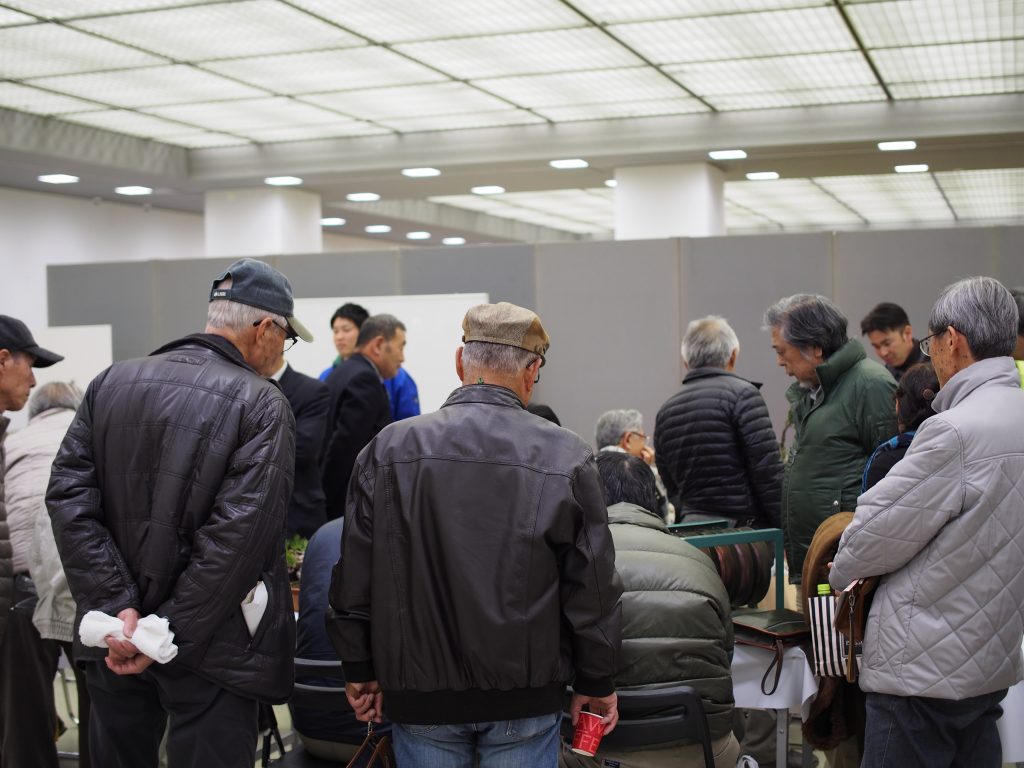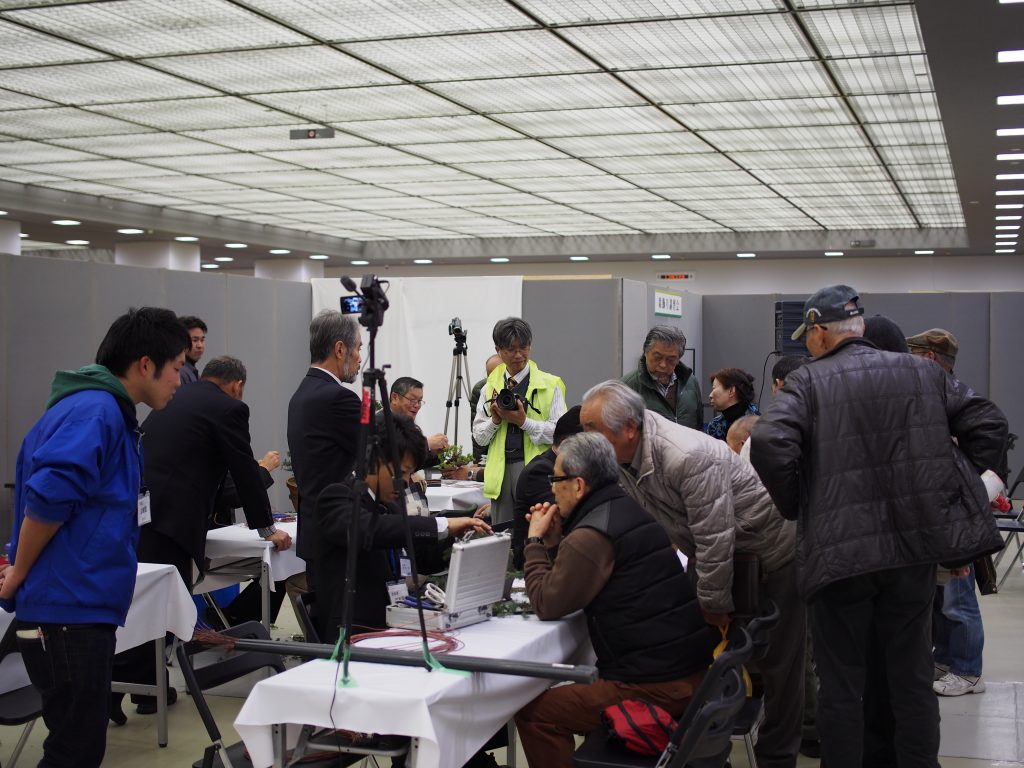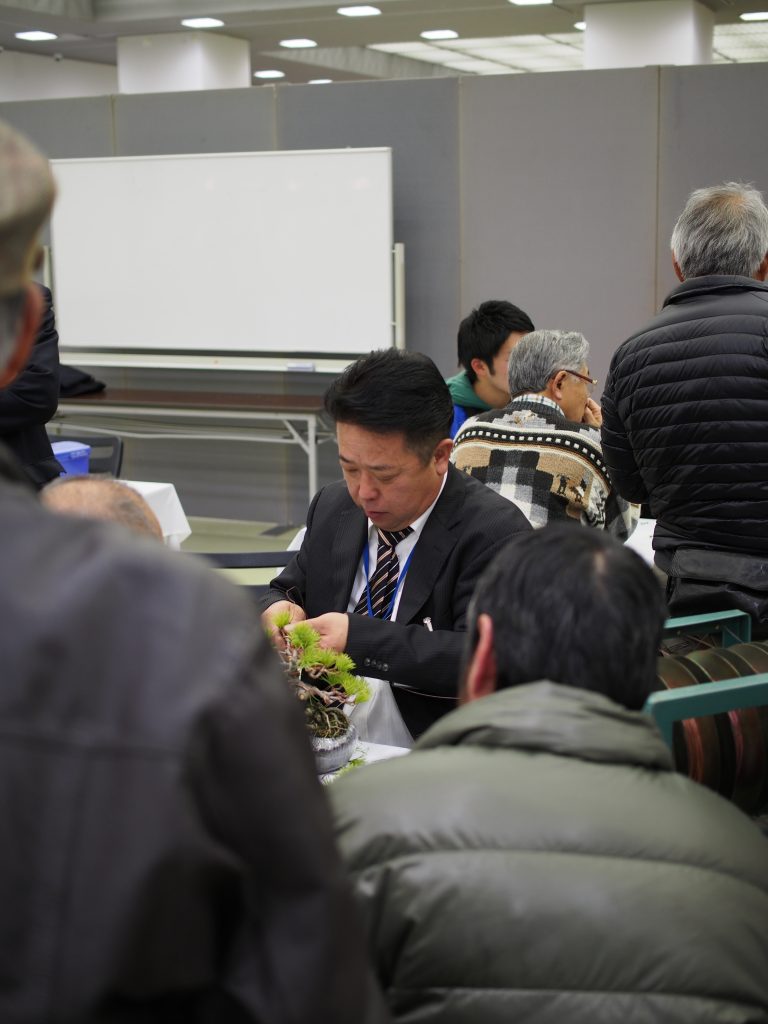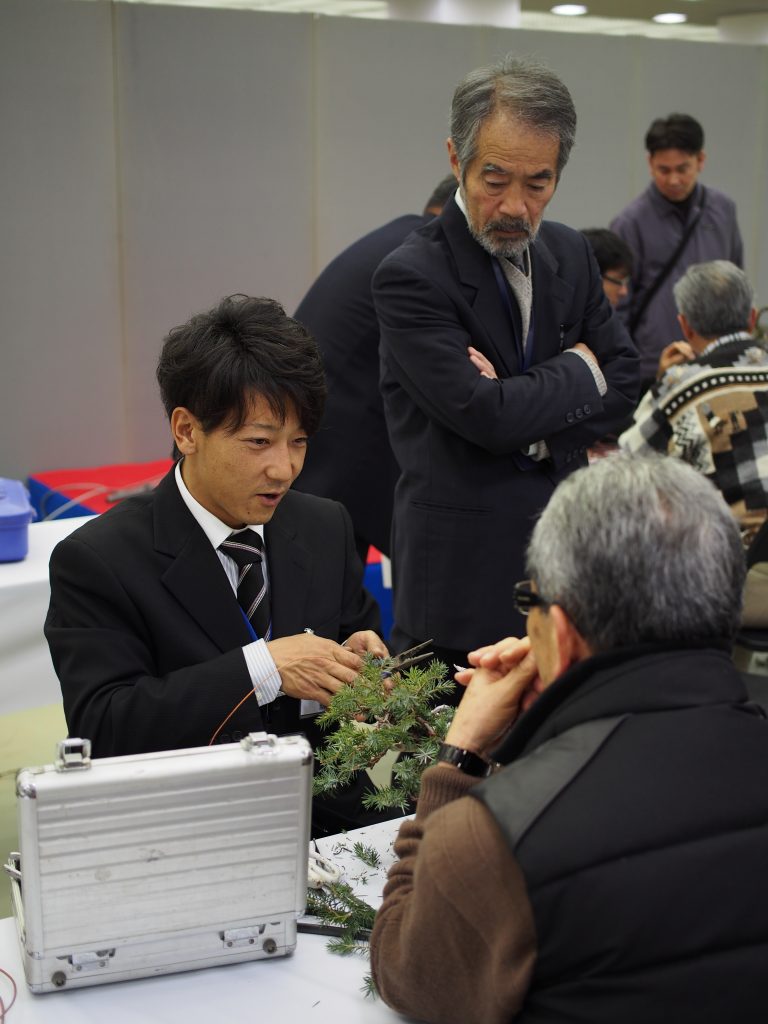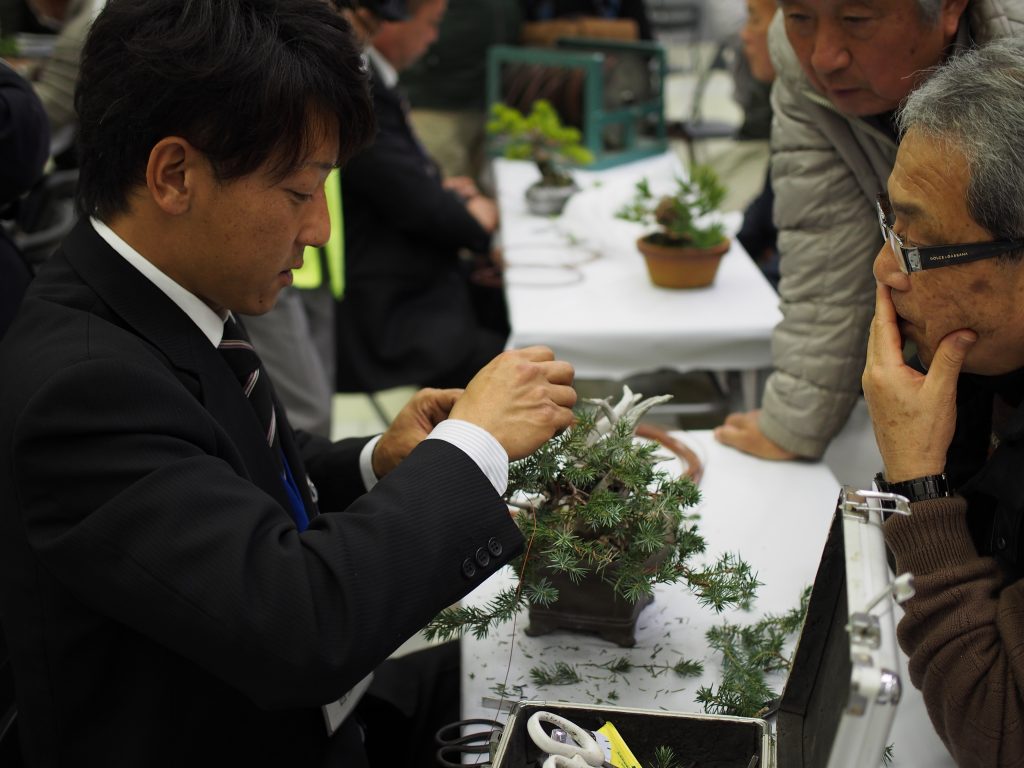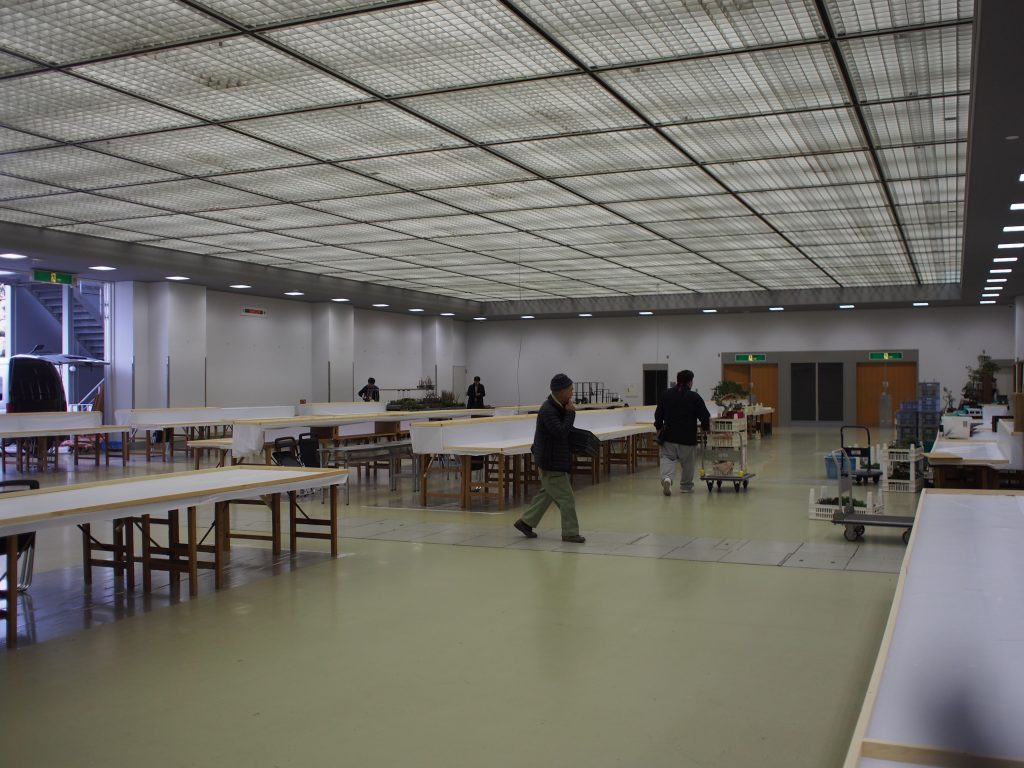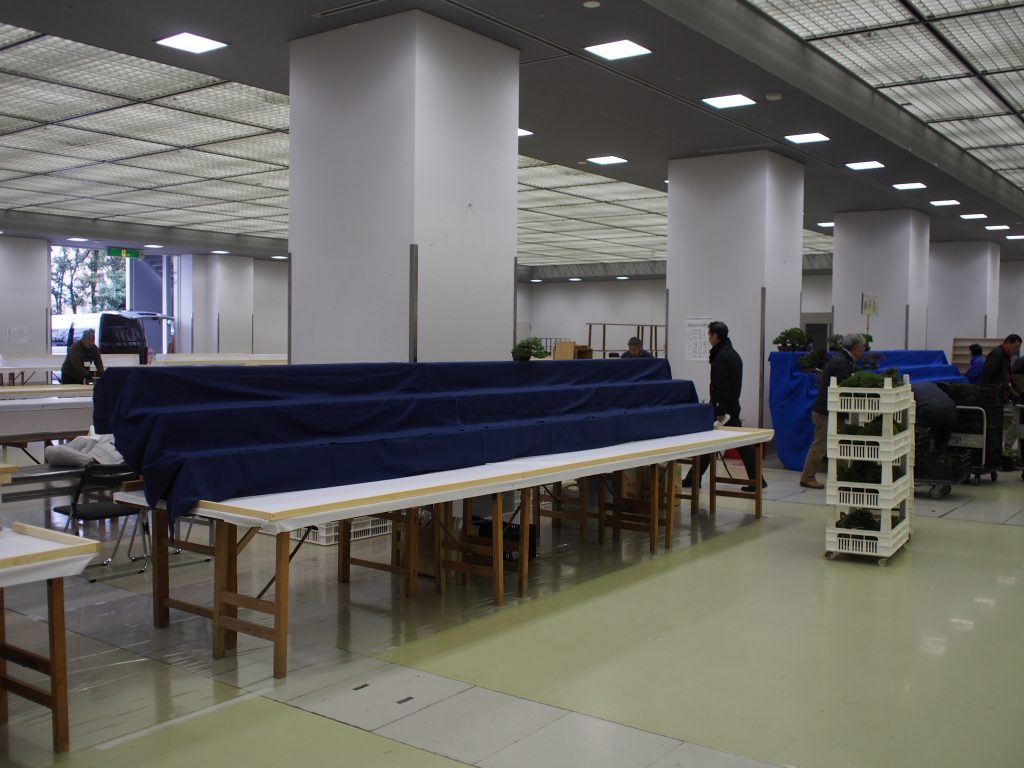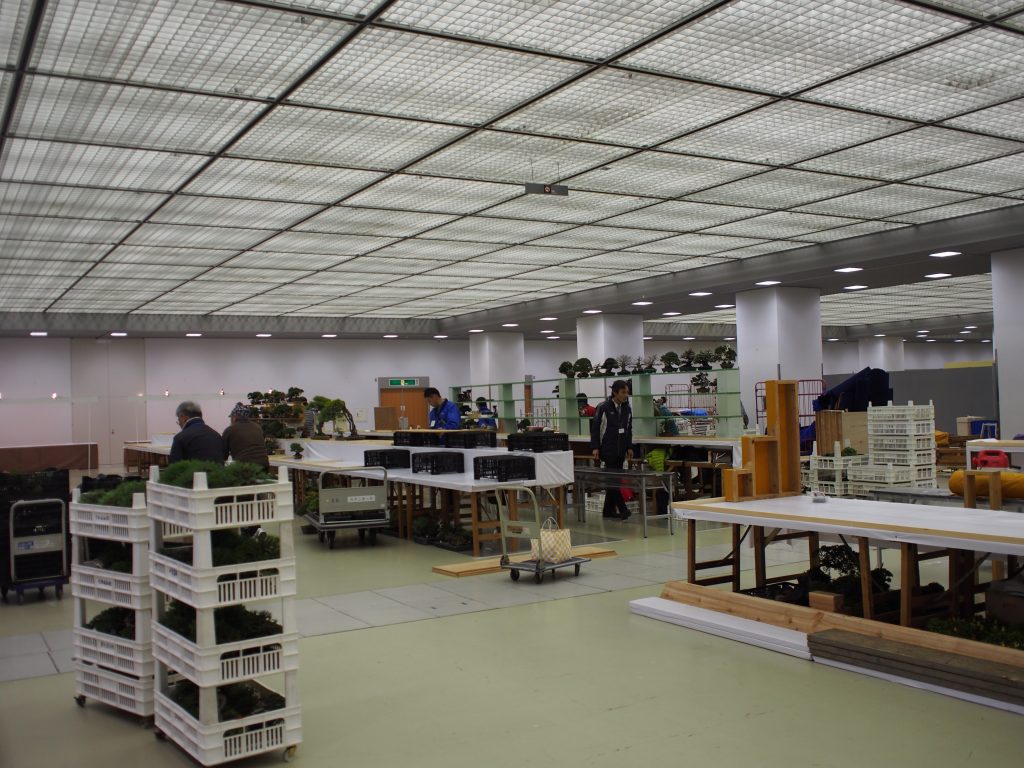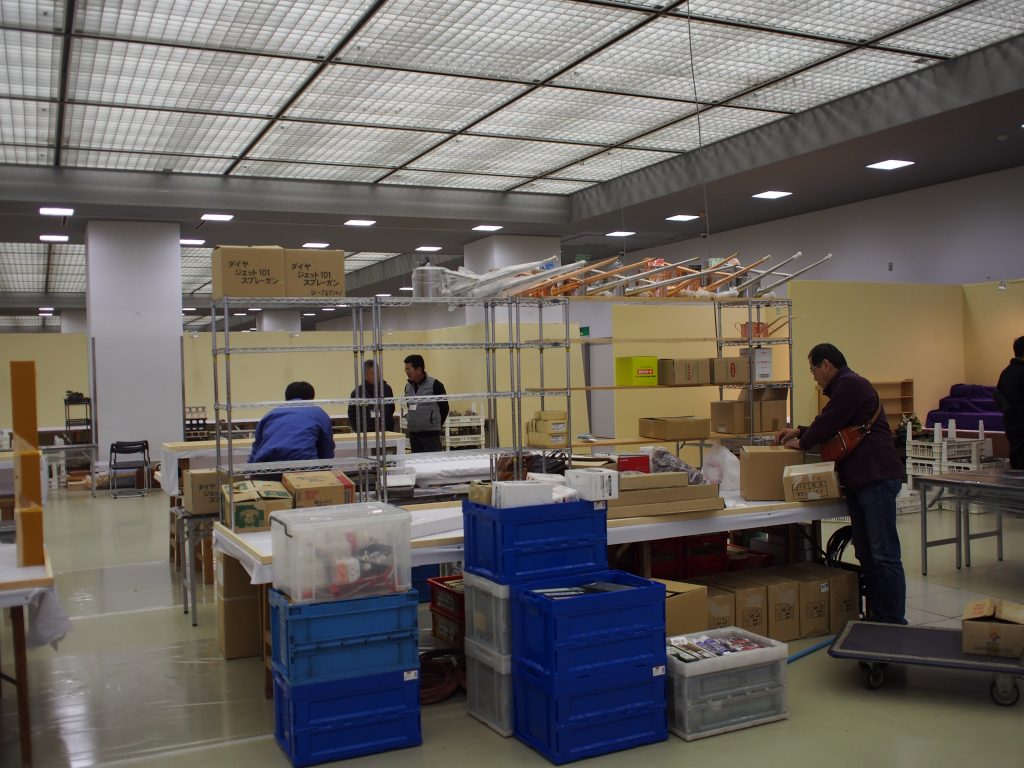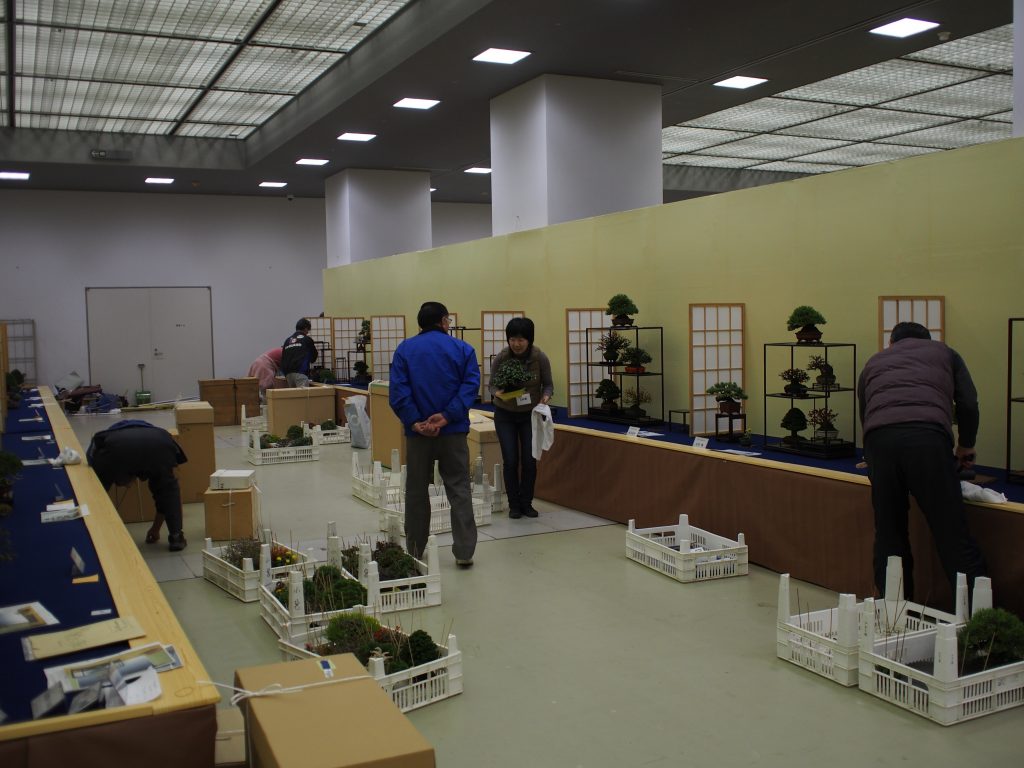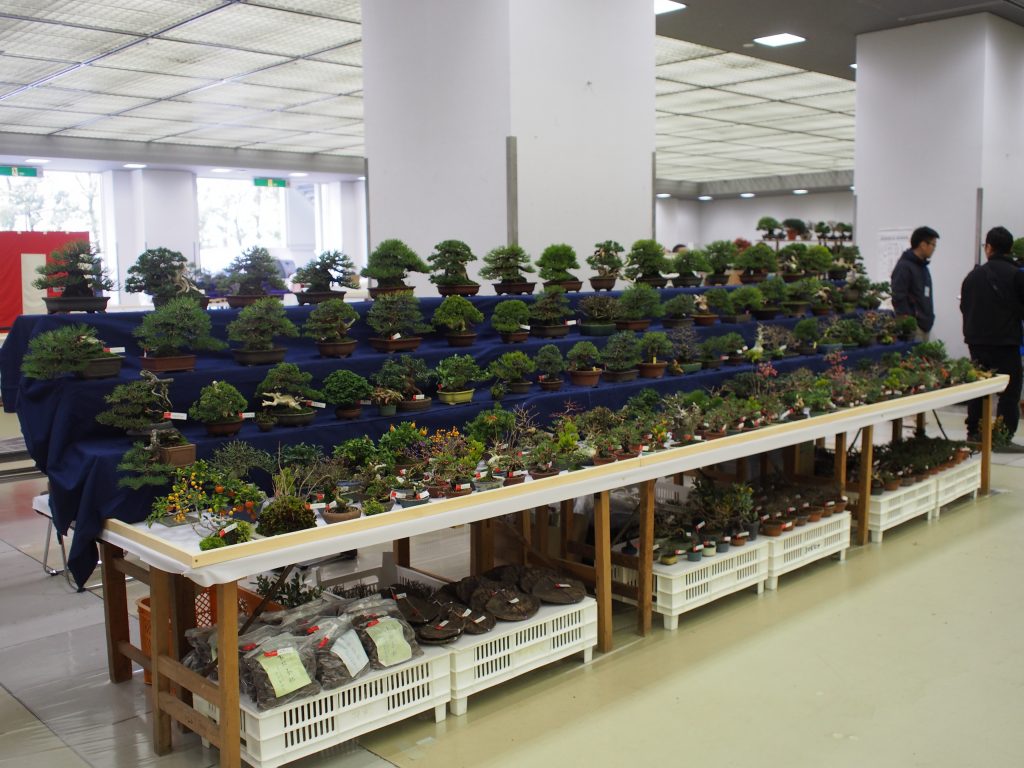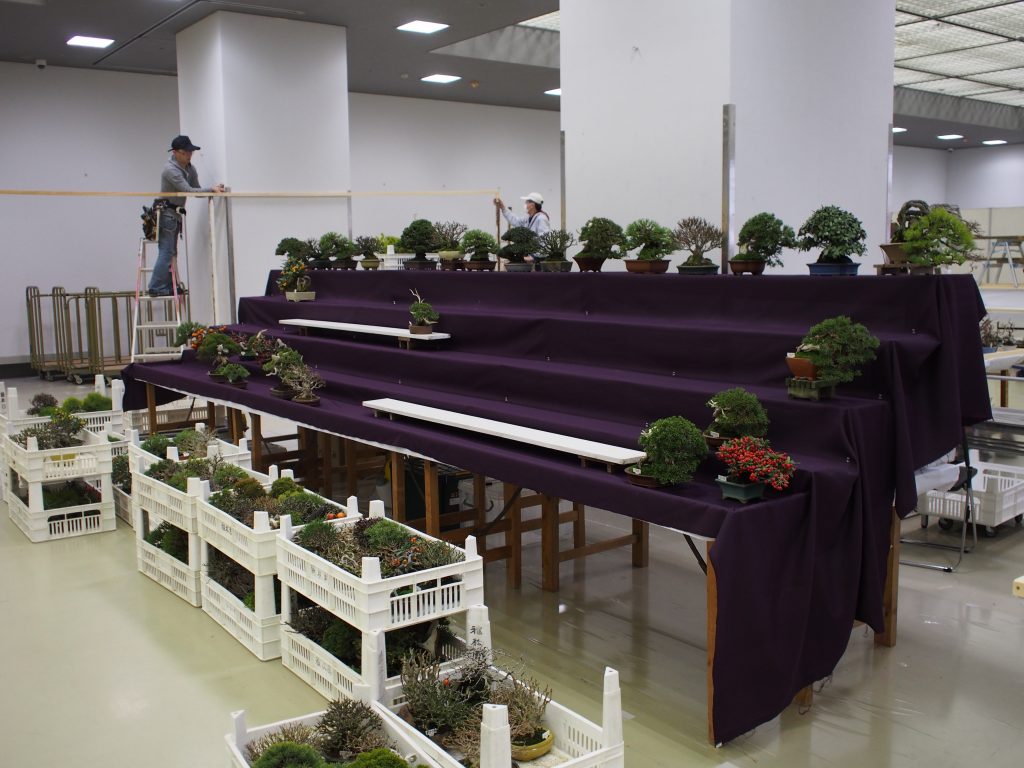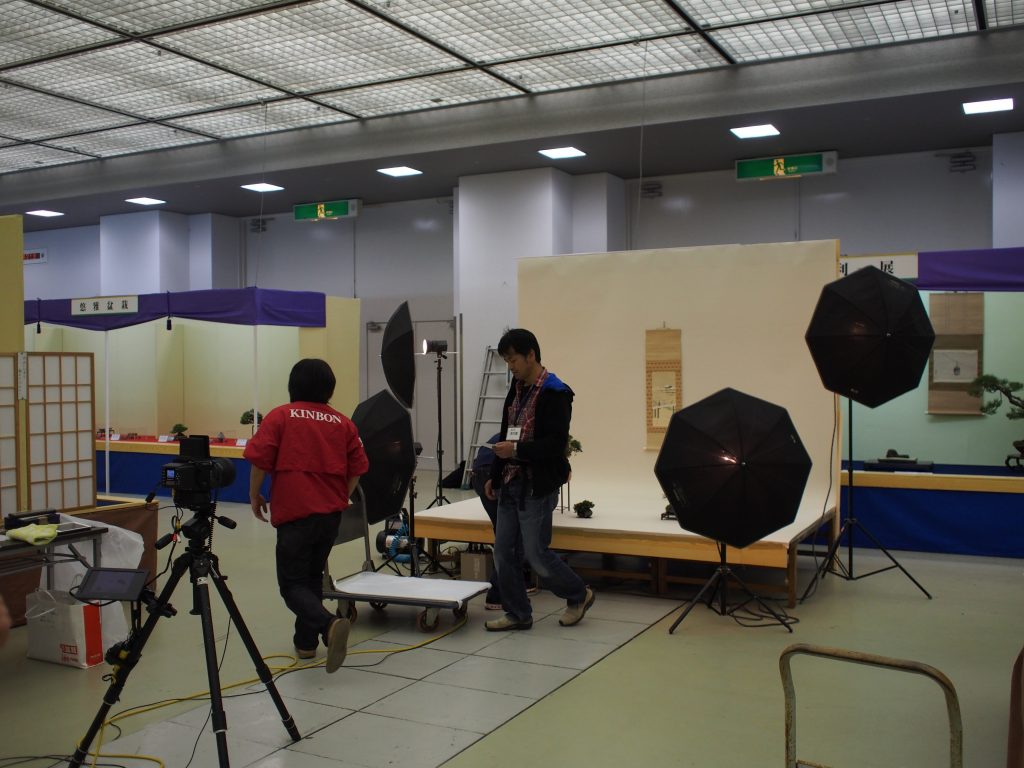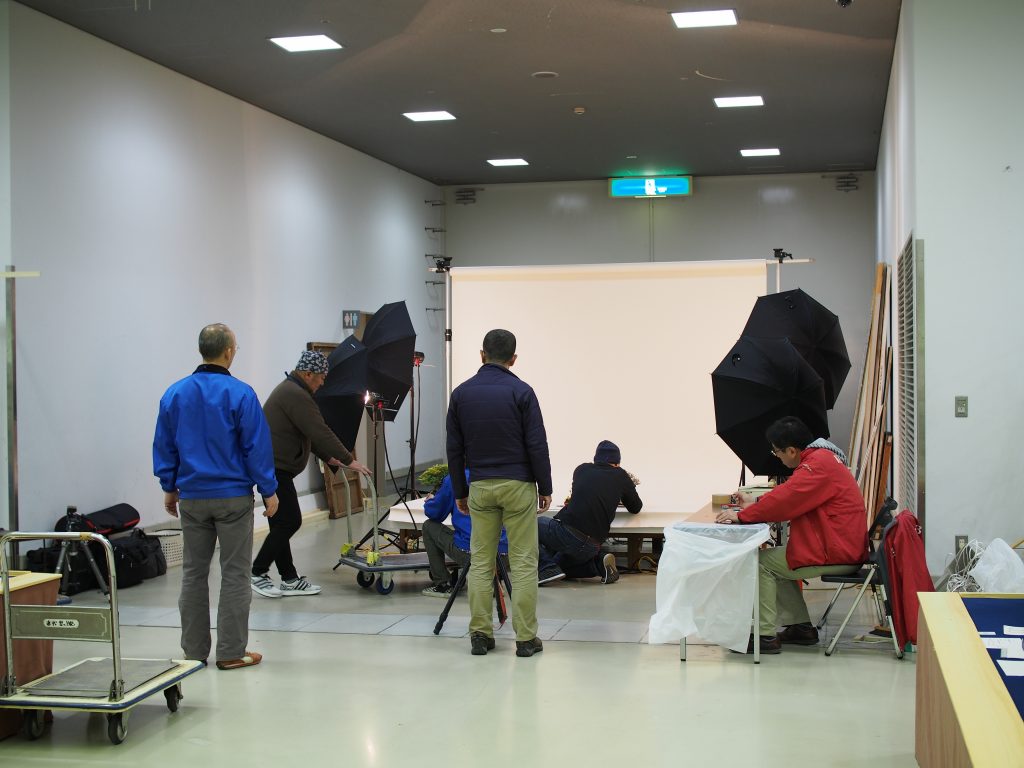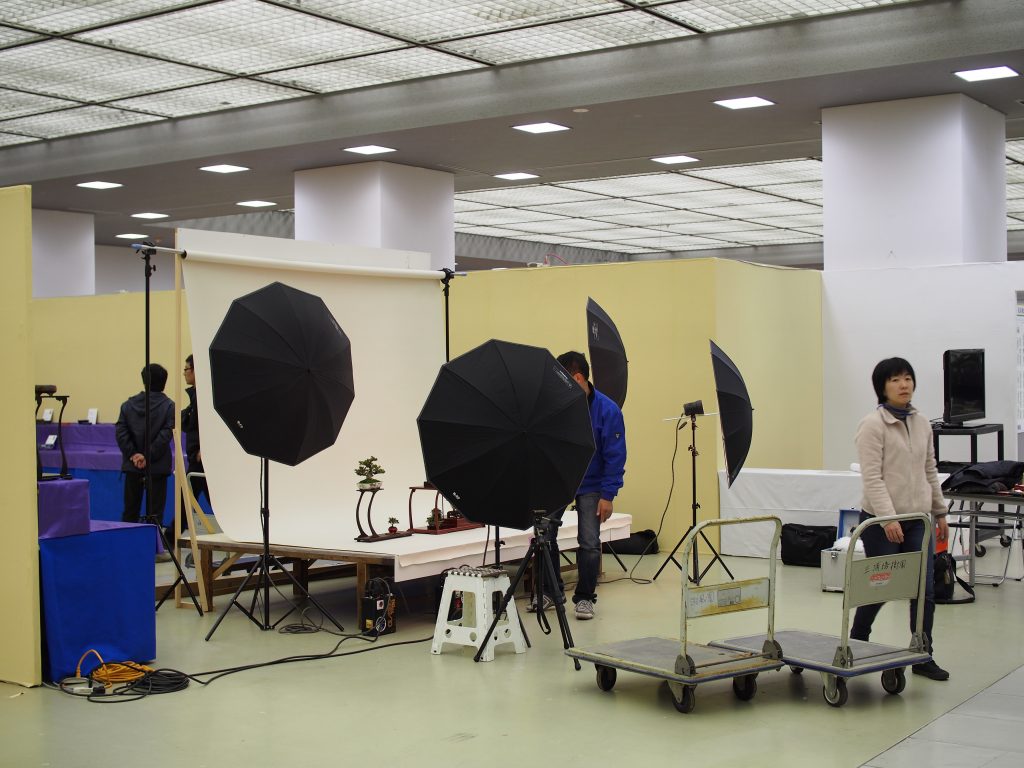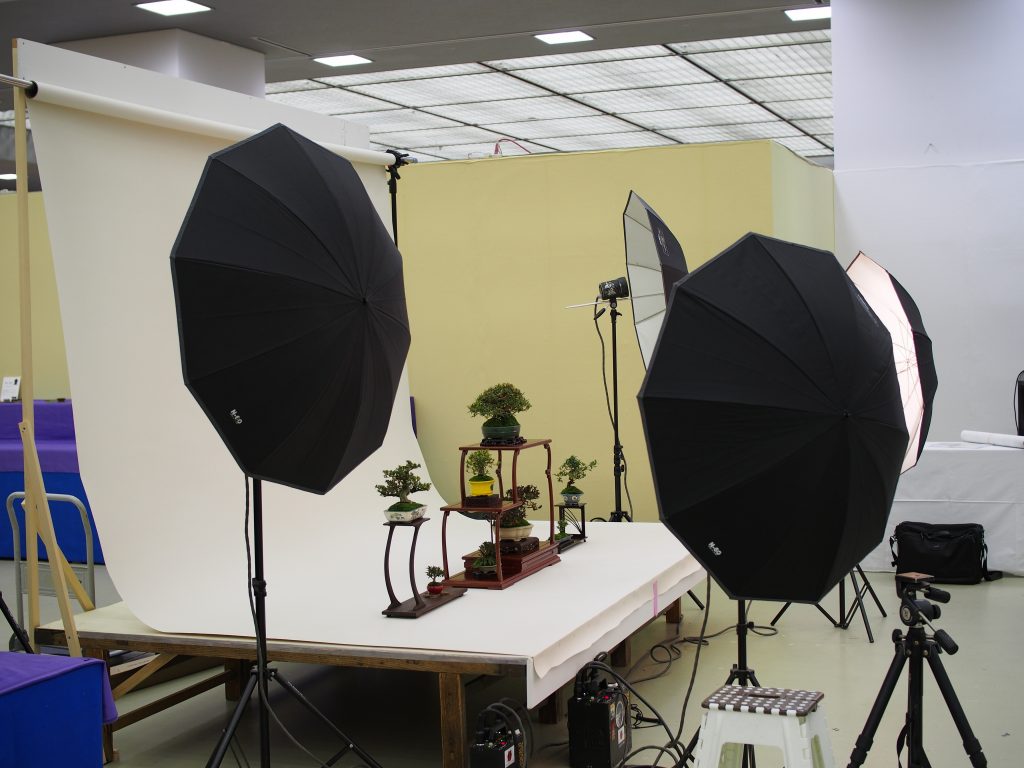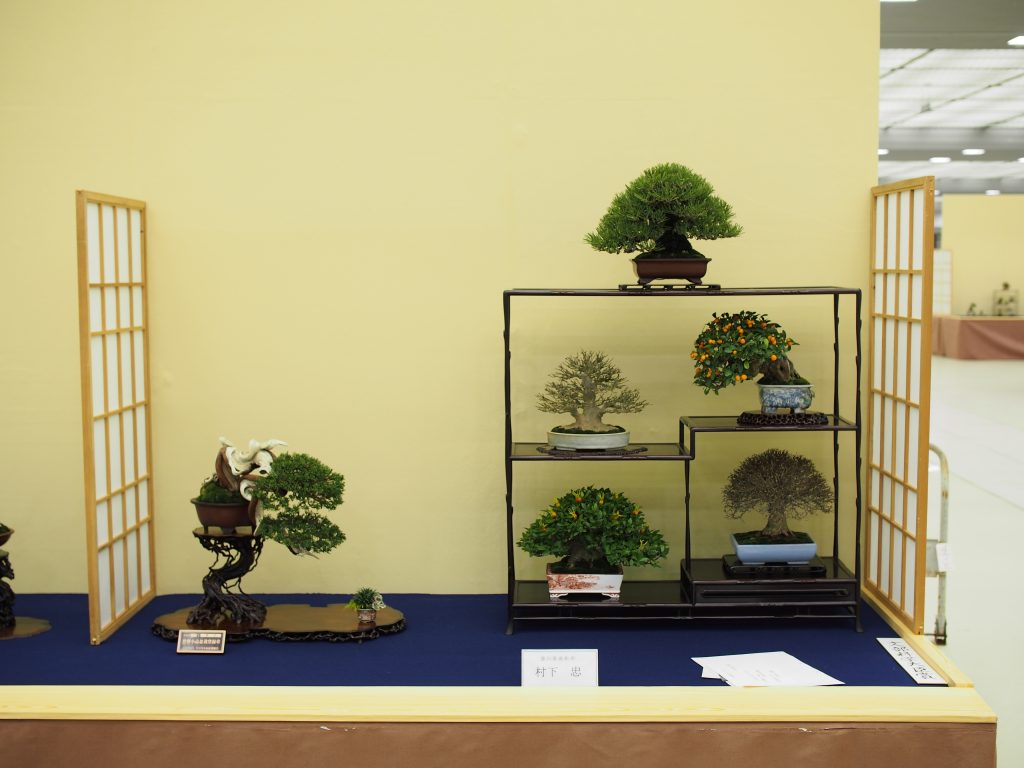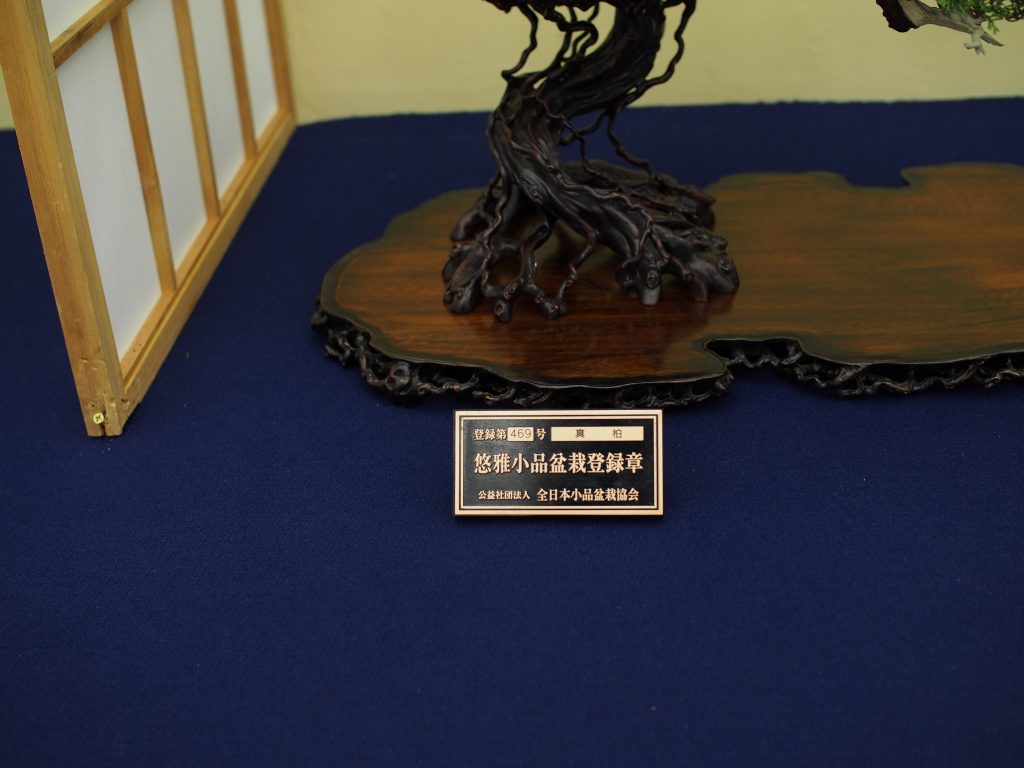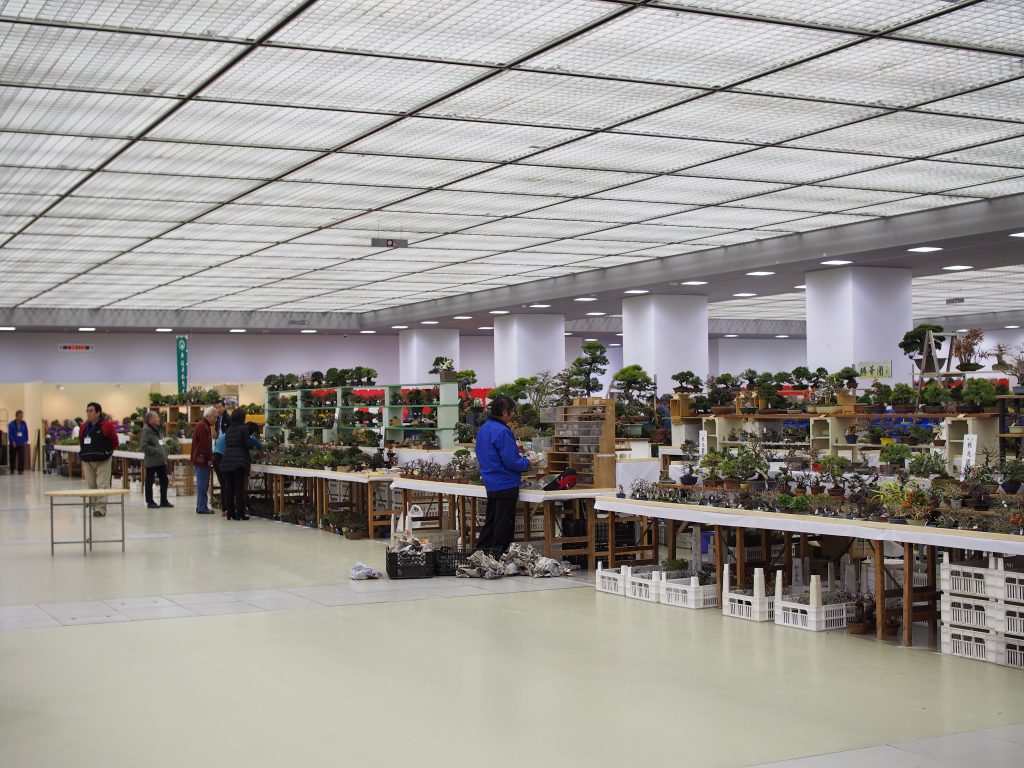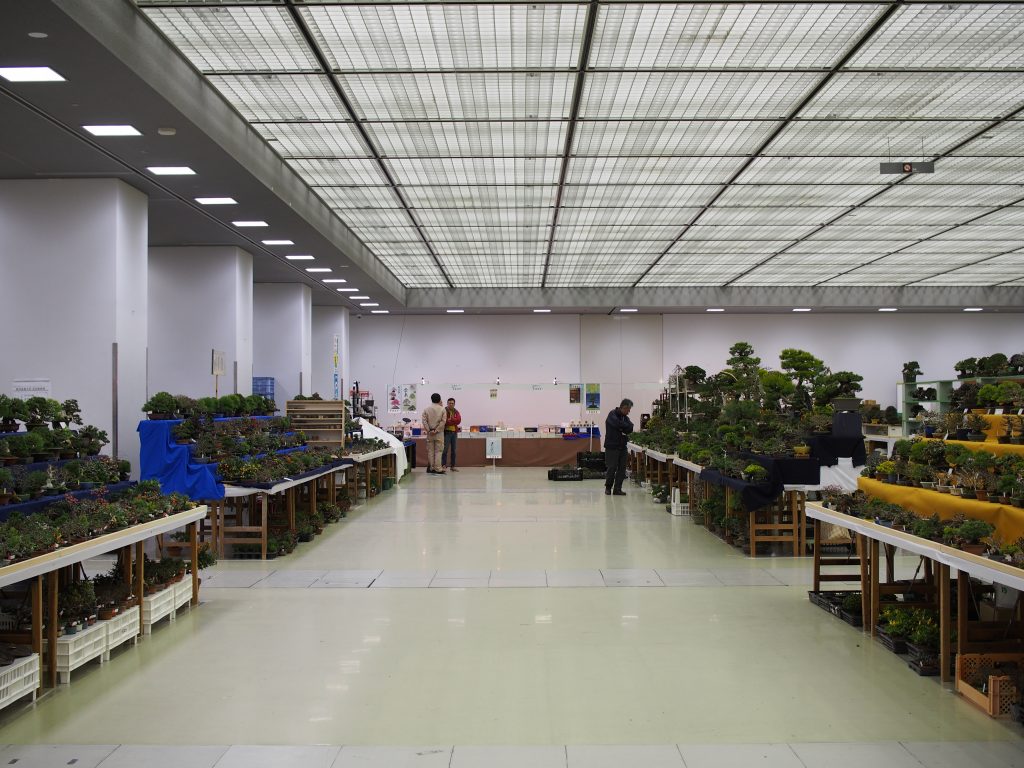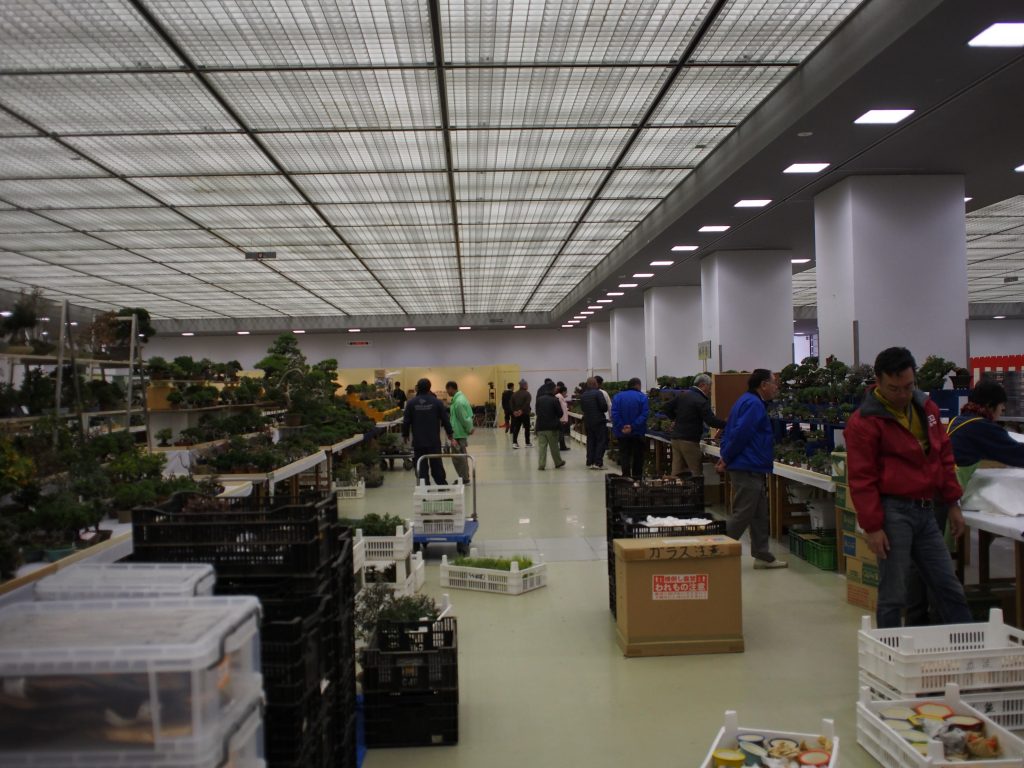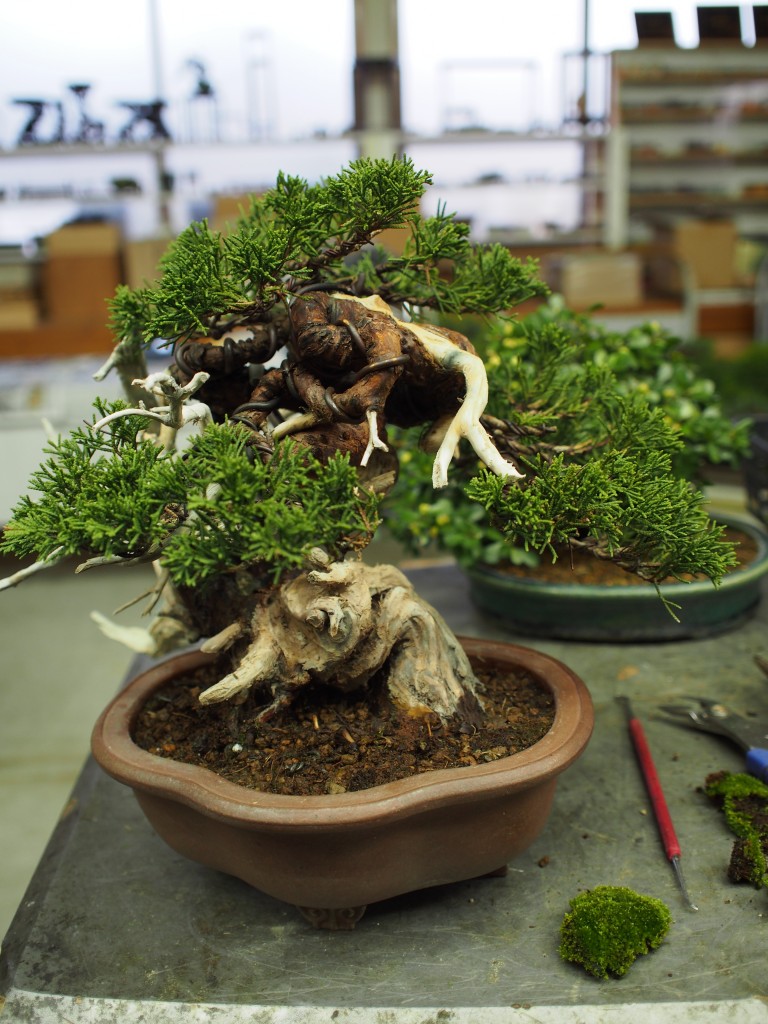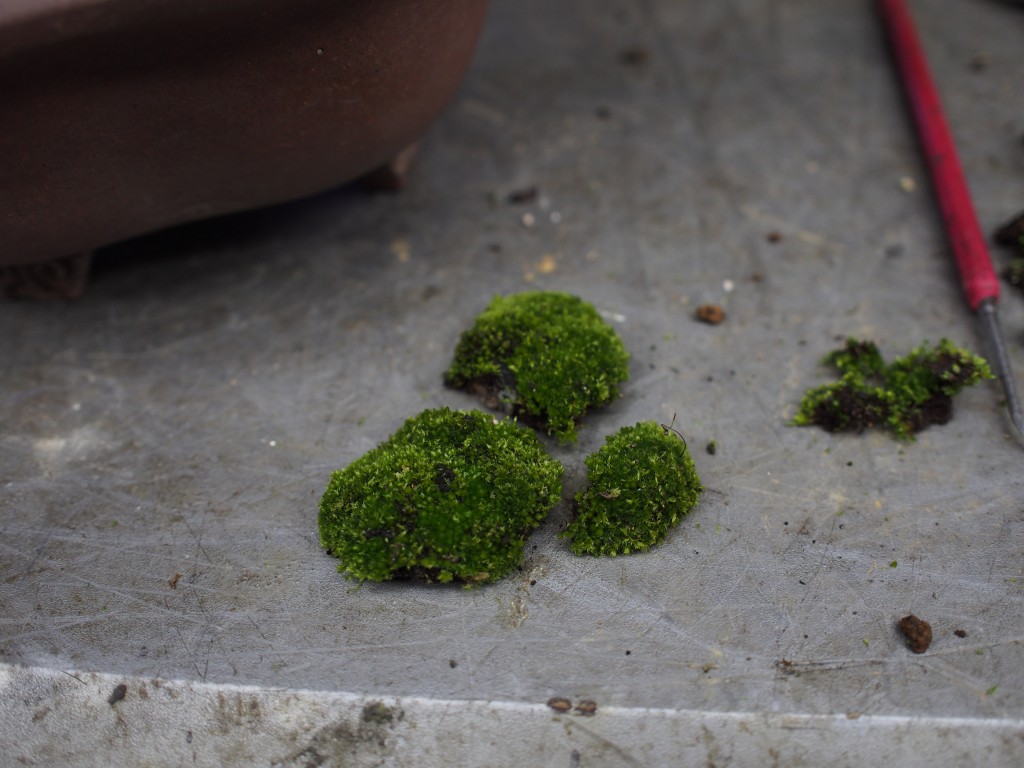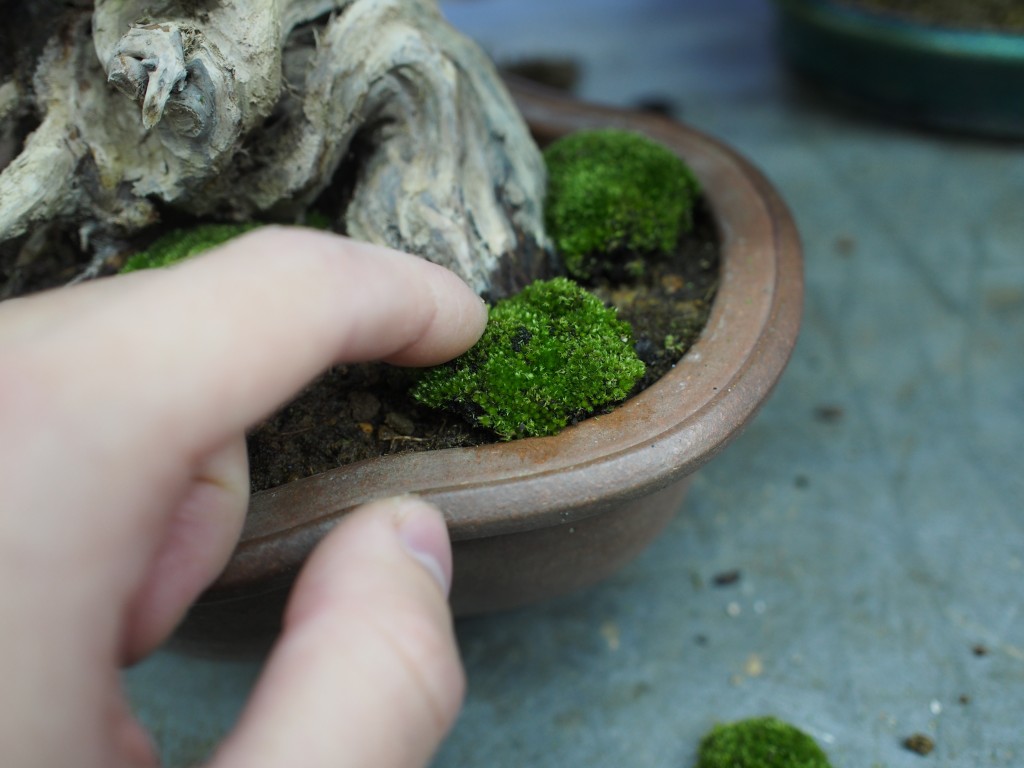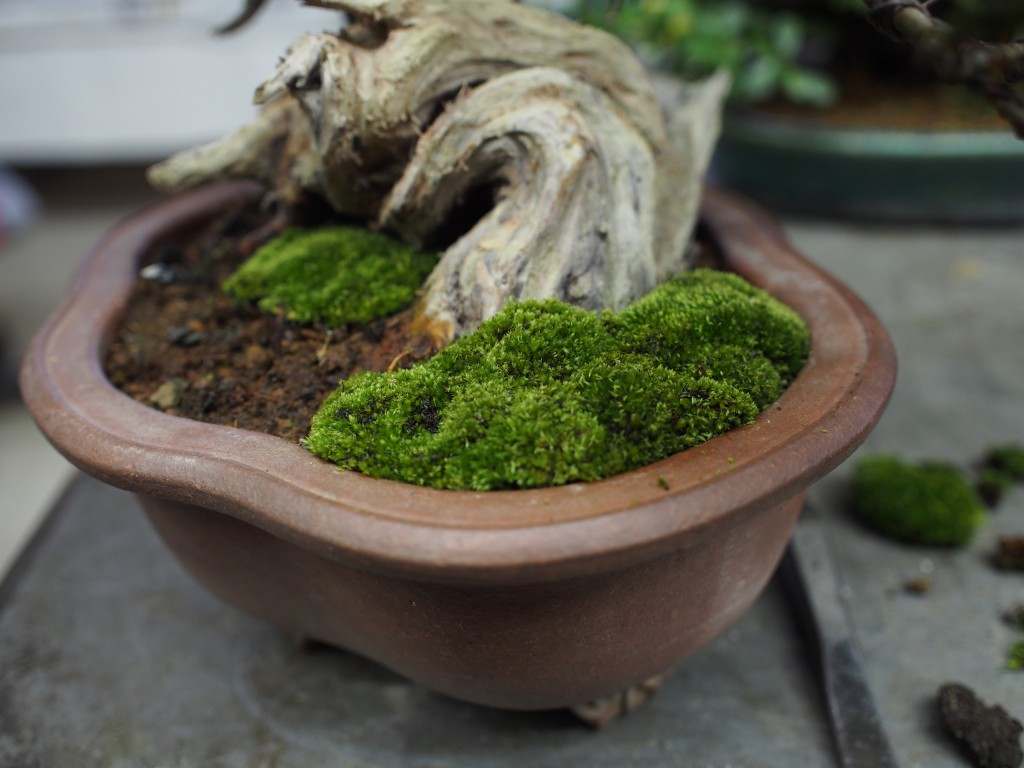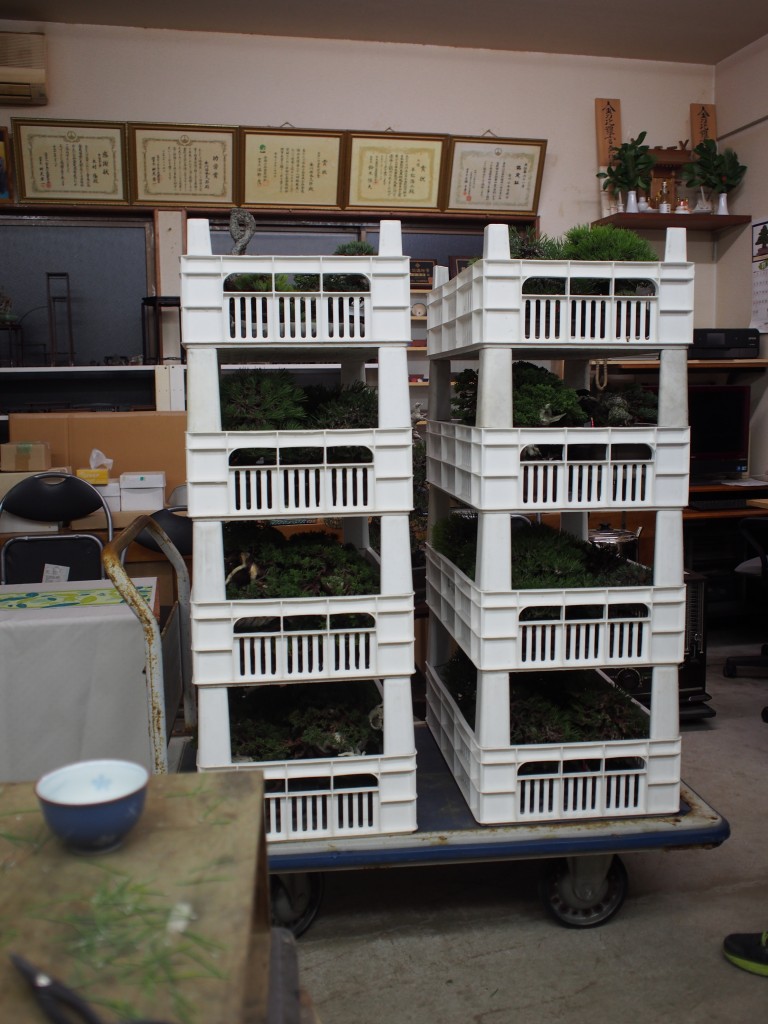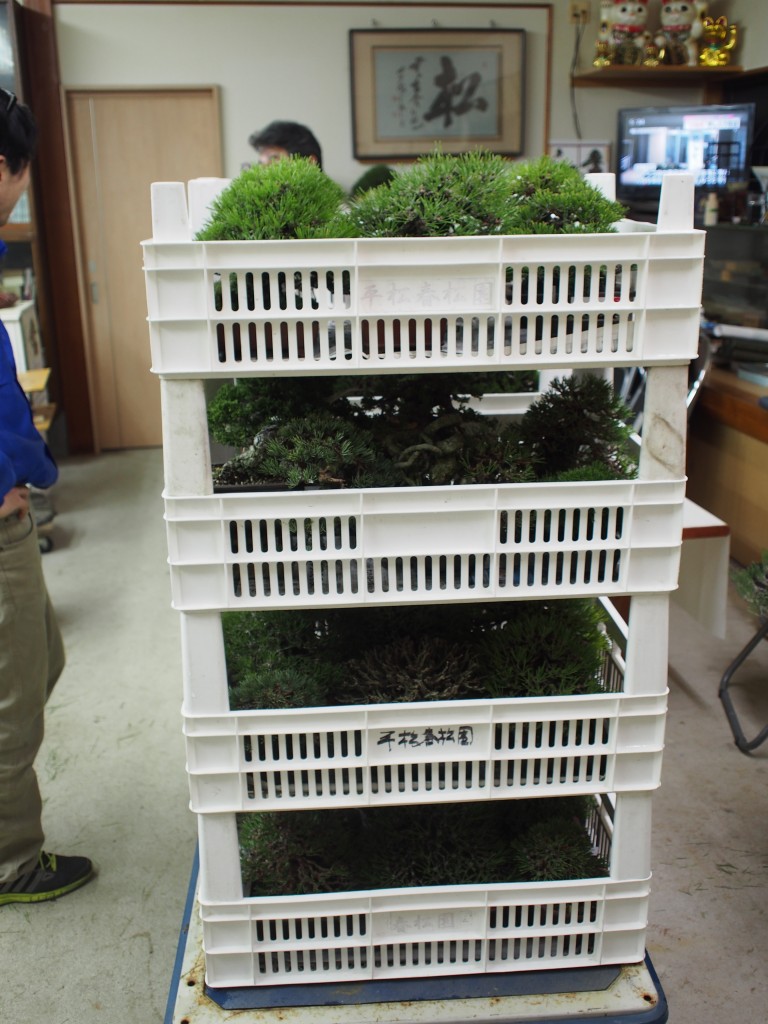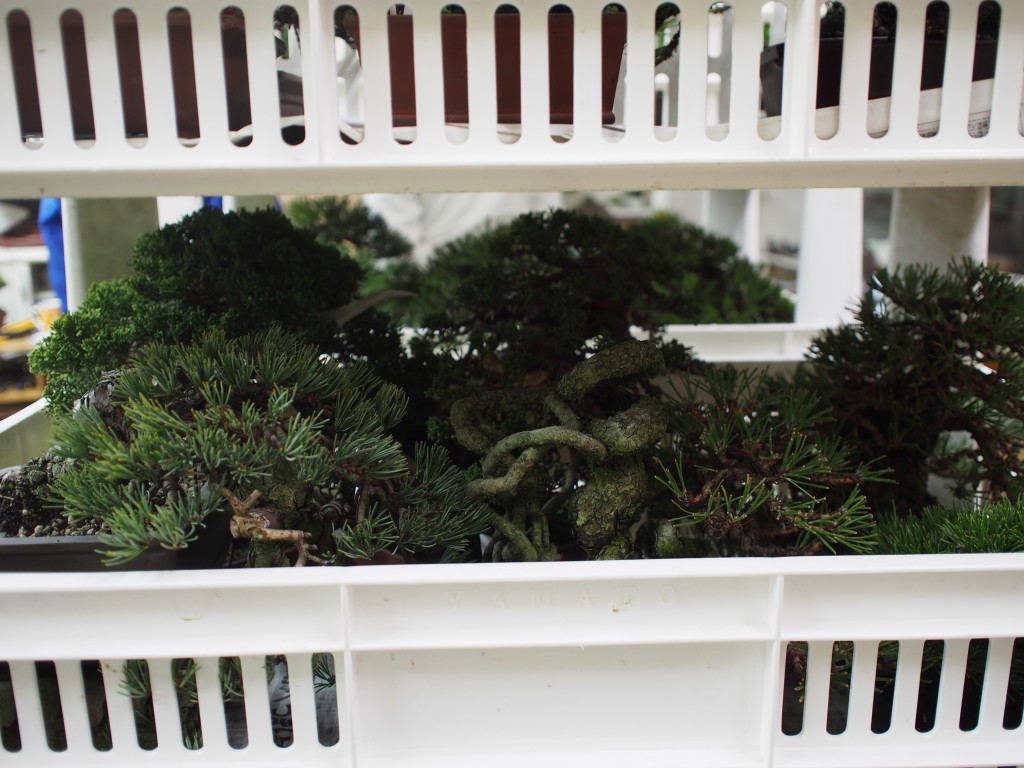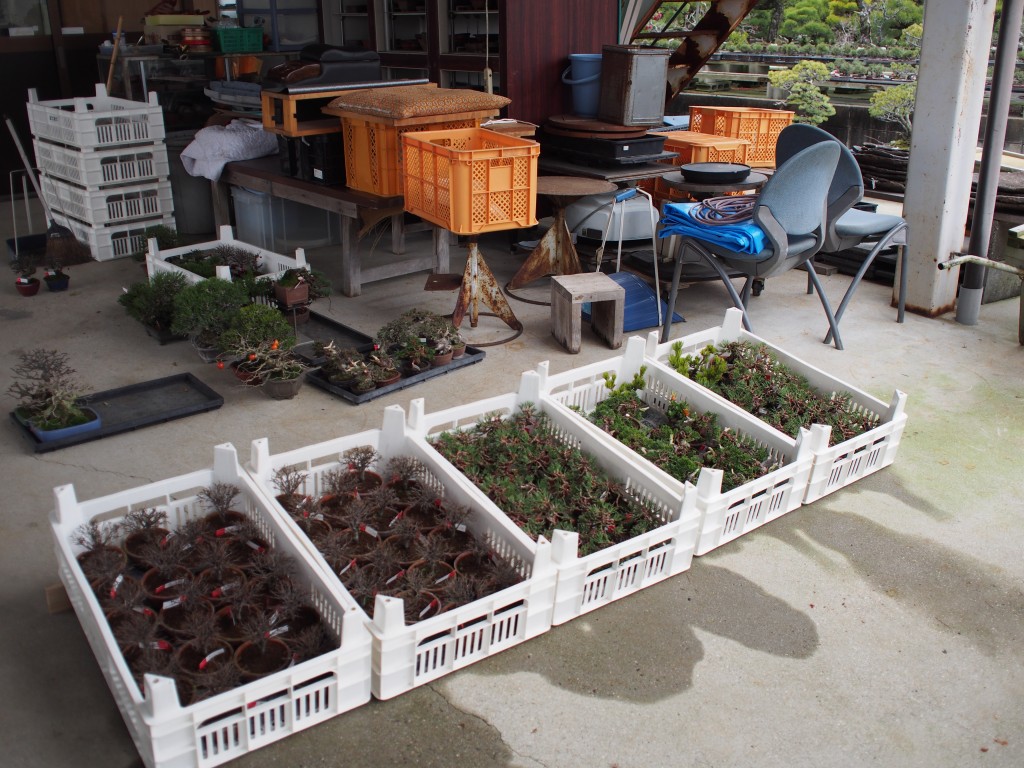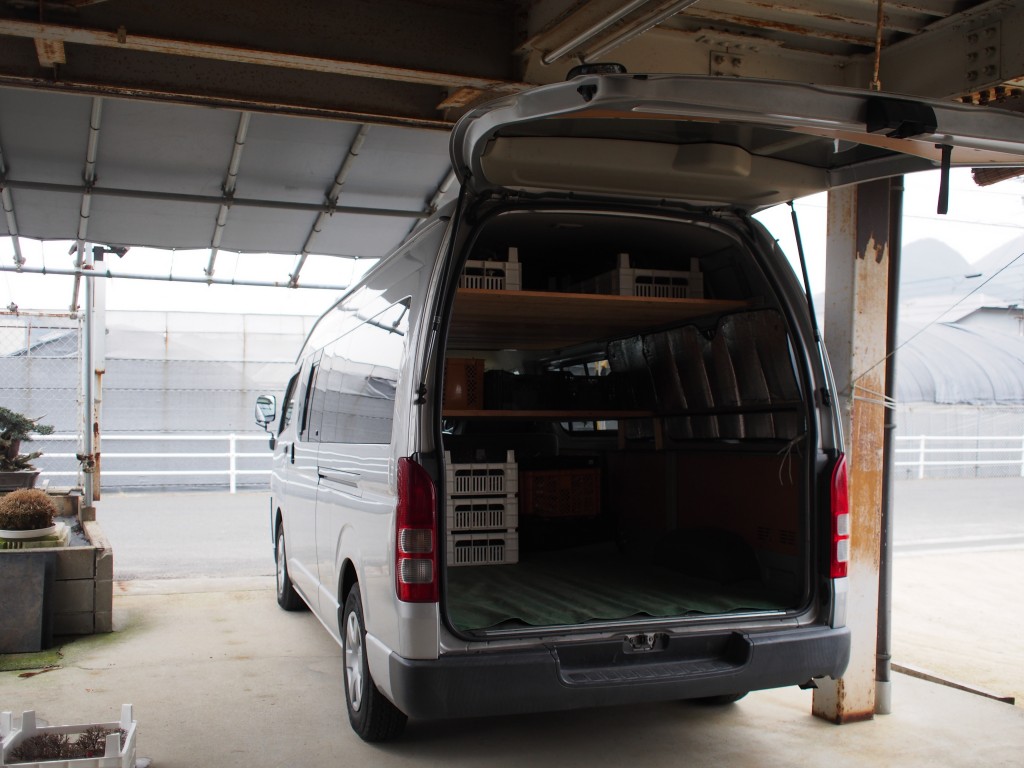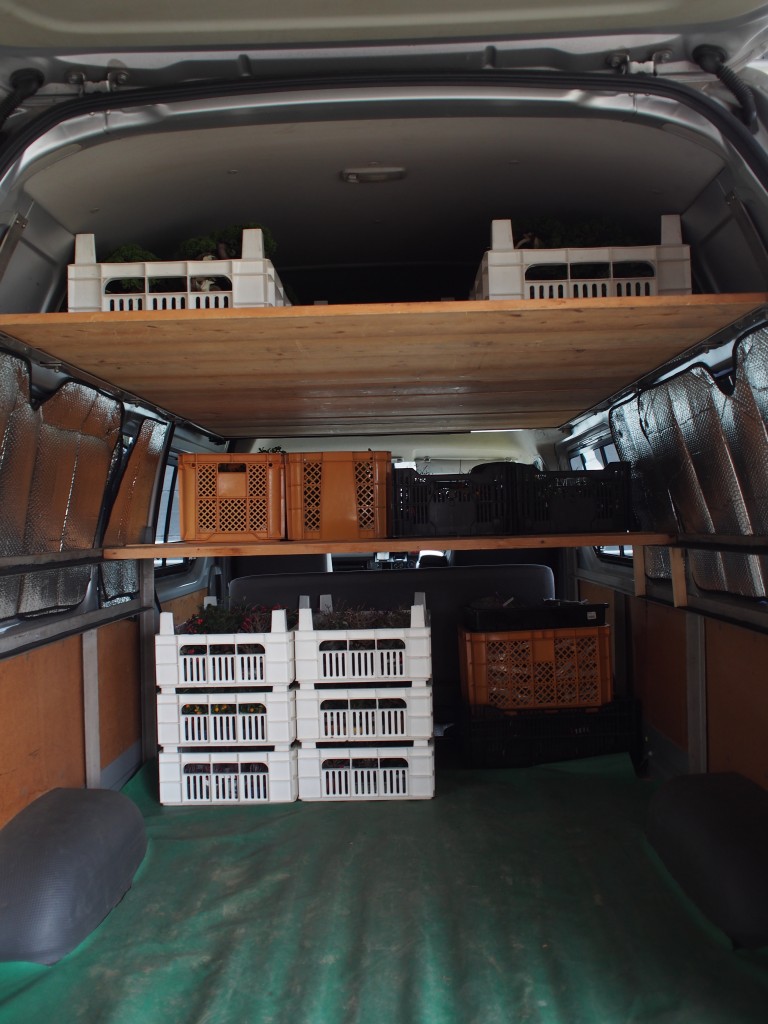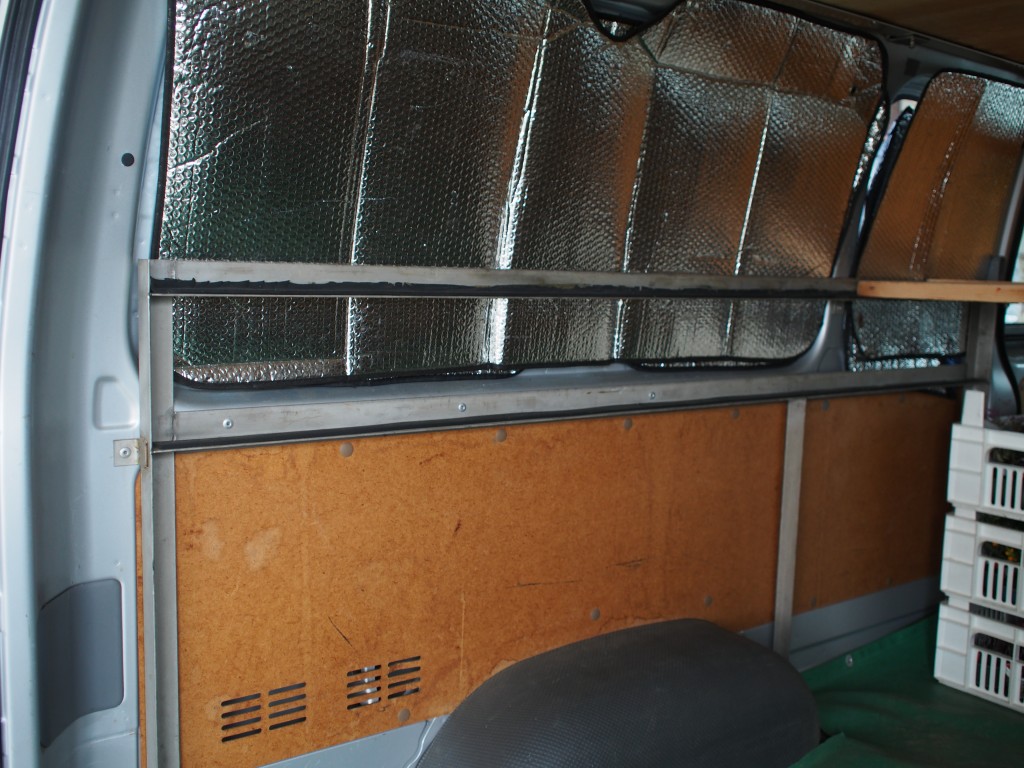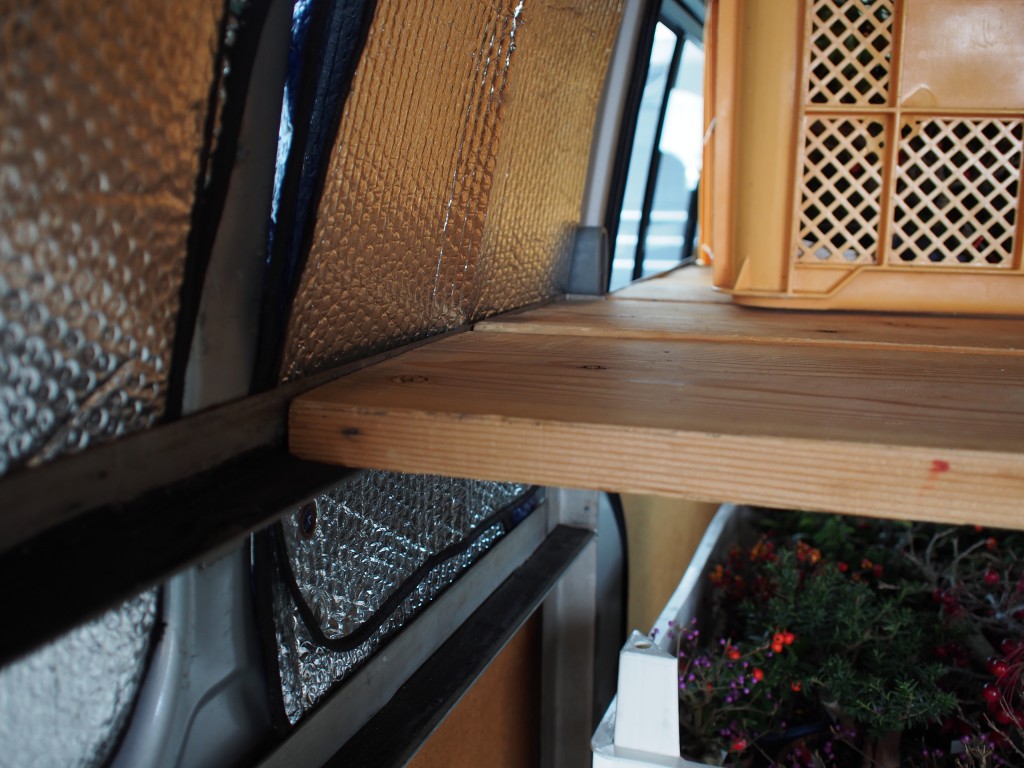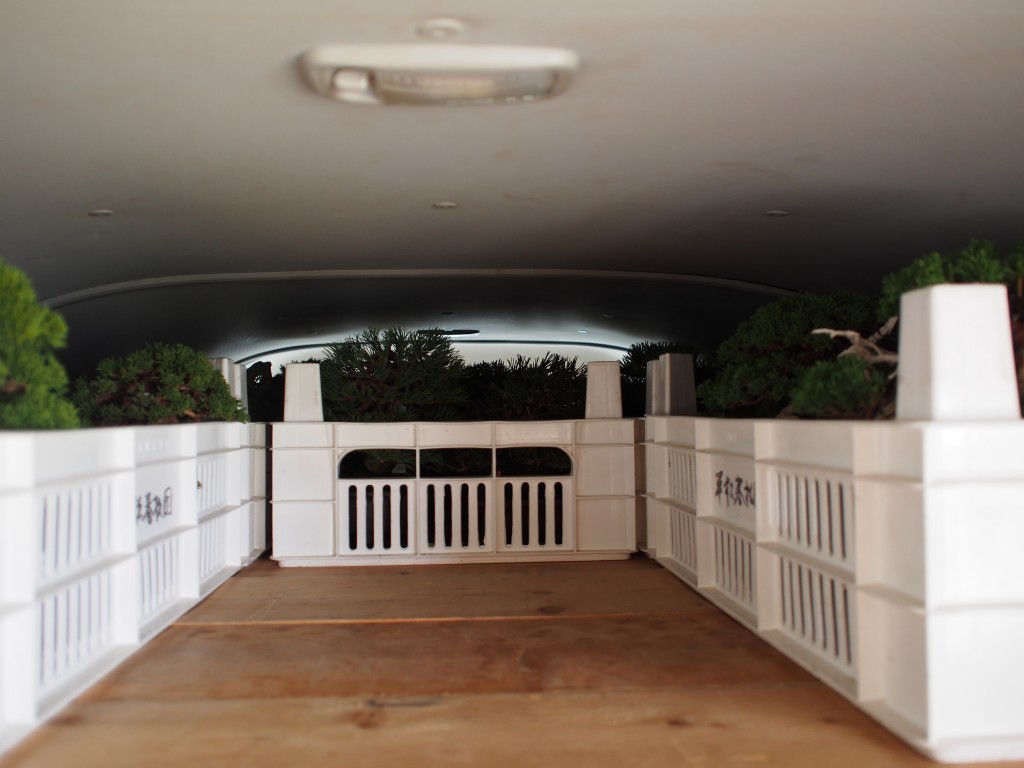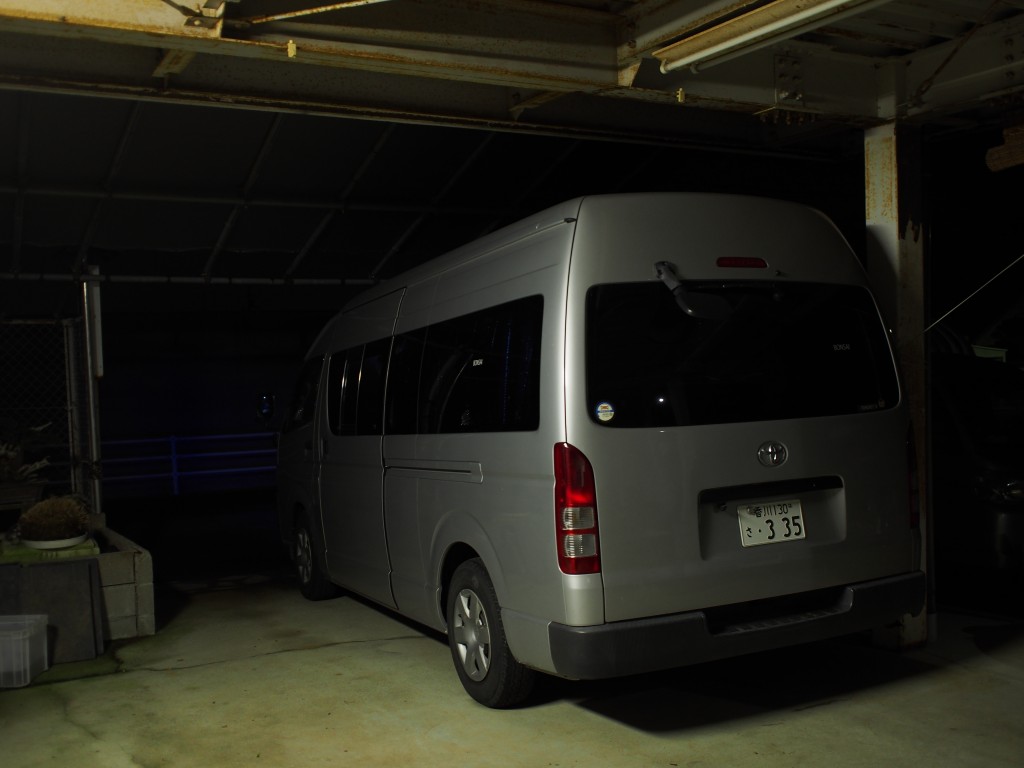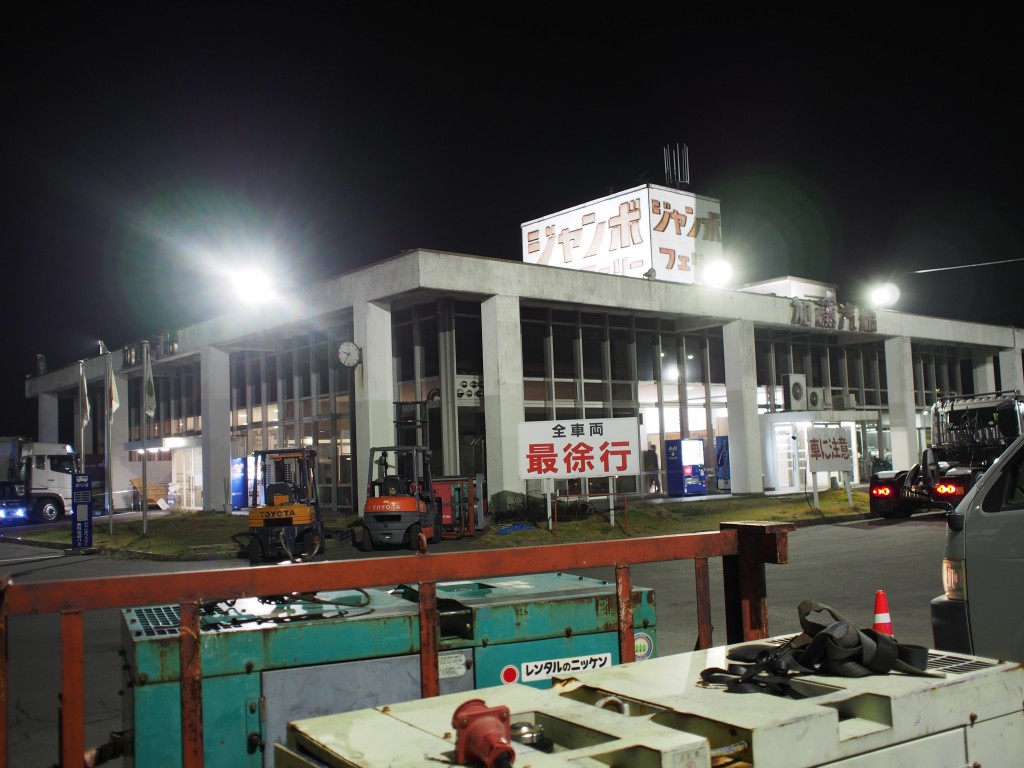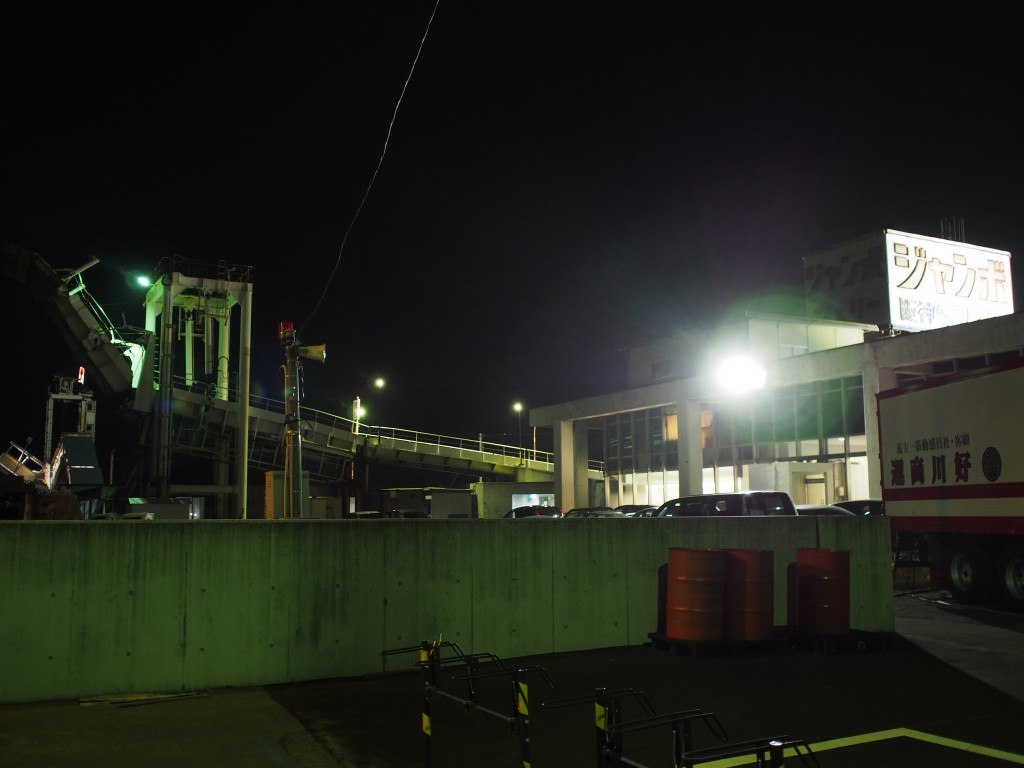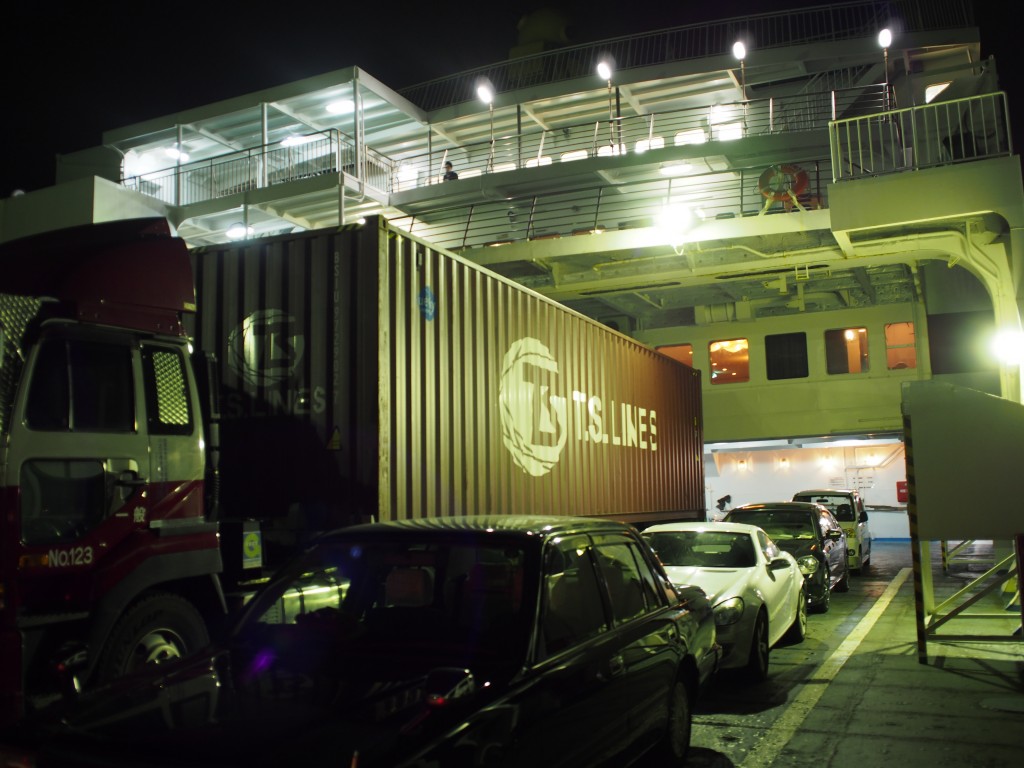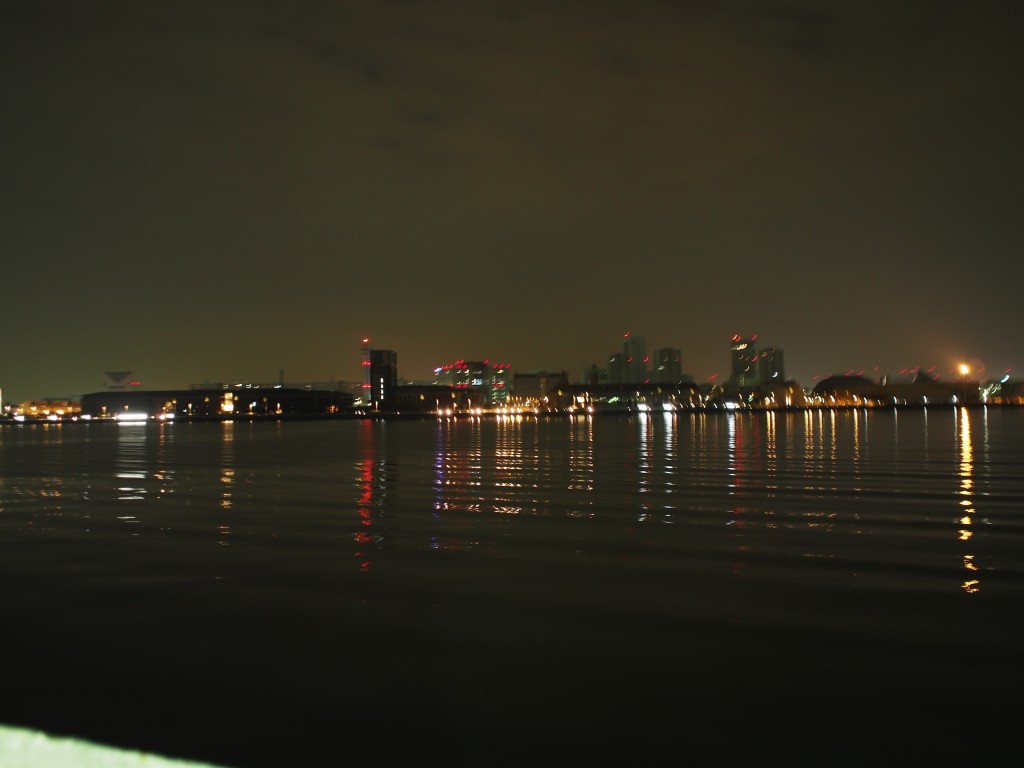A recent addition to Gafu-ten is the World Shohin Photo Award which will be running for its 3rd year in 2017. Here’s the link to the photo competition if you’re interested: https://www.facebook.com/events/1166677350051323/
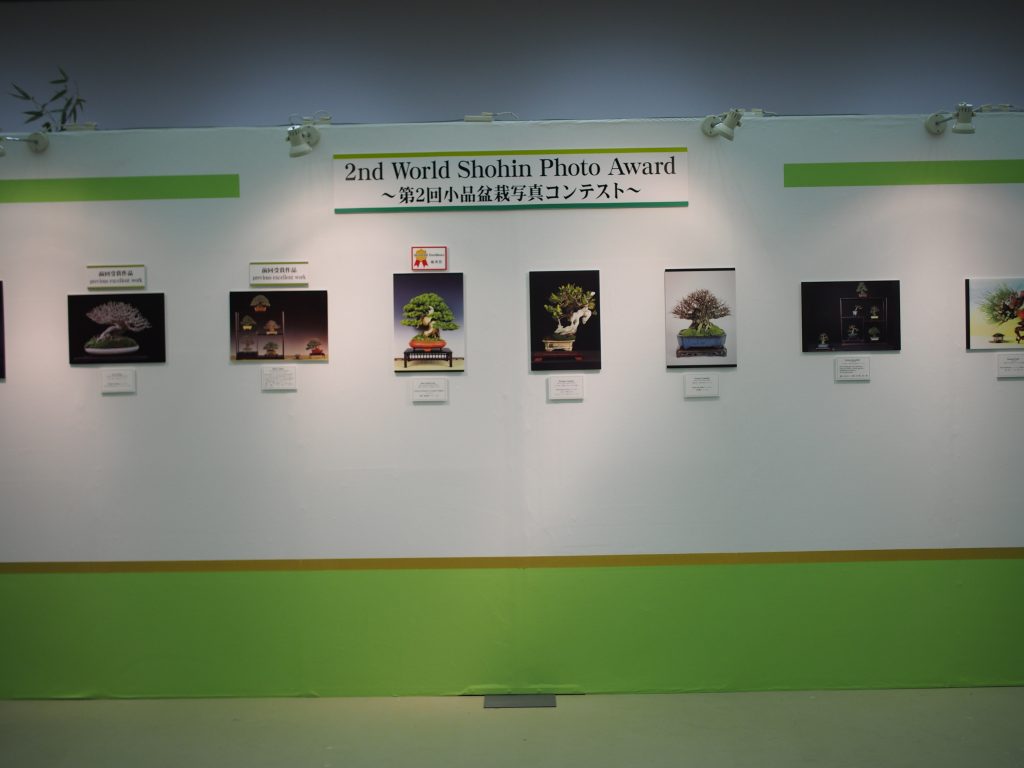
The winner of the photo competition this year was Jose Acuna from Spain who runs the blog “Centro Bonsai Tenerife”. Jose also studied for a few weeks at Koji’s inaugural “Takamatsu Bonsai School” after Gafu-ten, along with 2 other students form France and China. Here’s a link to his blog: http://centrobonsaitenerife.blogspot.com.au/
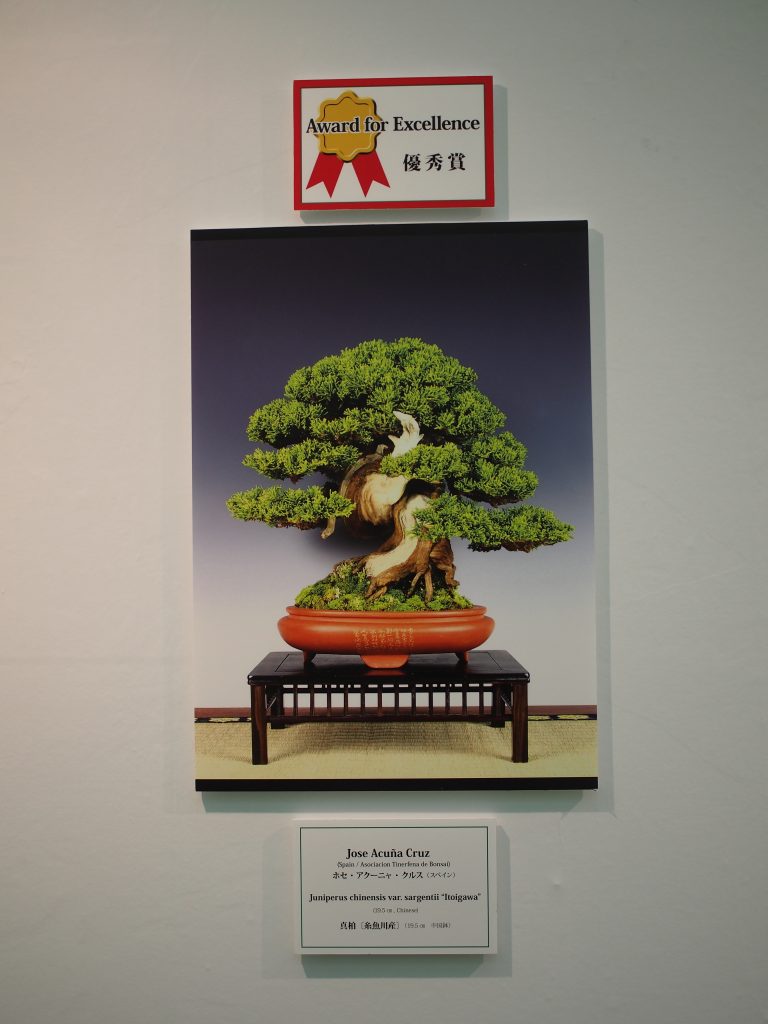
Being caught up working at the sales area only allowed me a half hour on the final day to look at the exhibition. So rather than take photos of every single tree in the exhibition, I only took photos of the trees and displays that I liked.
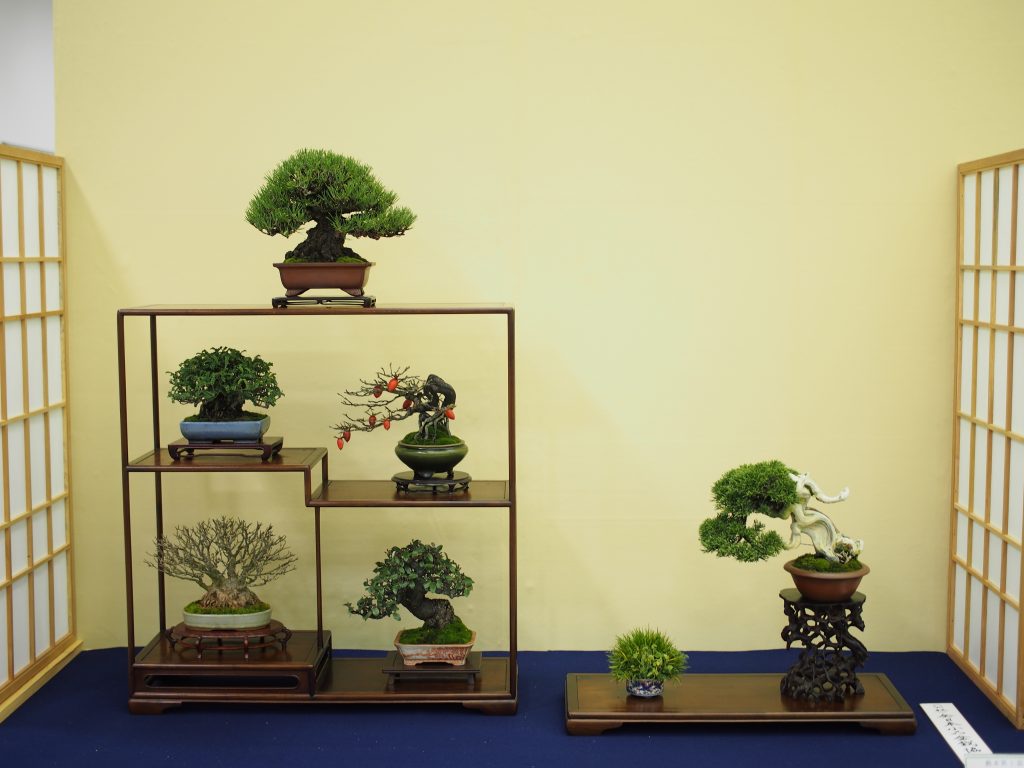
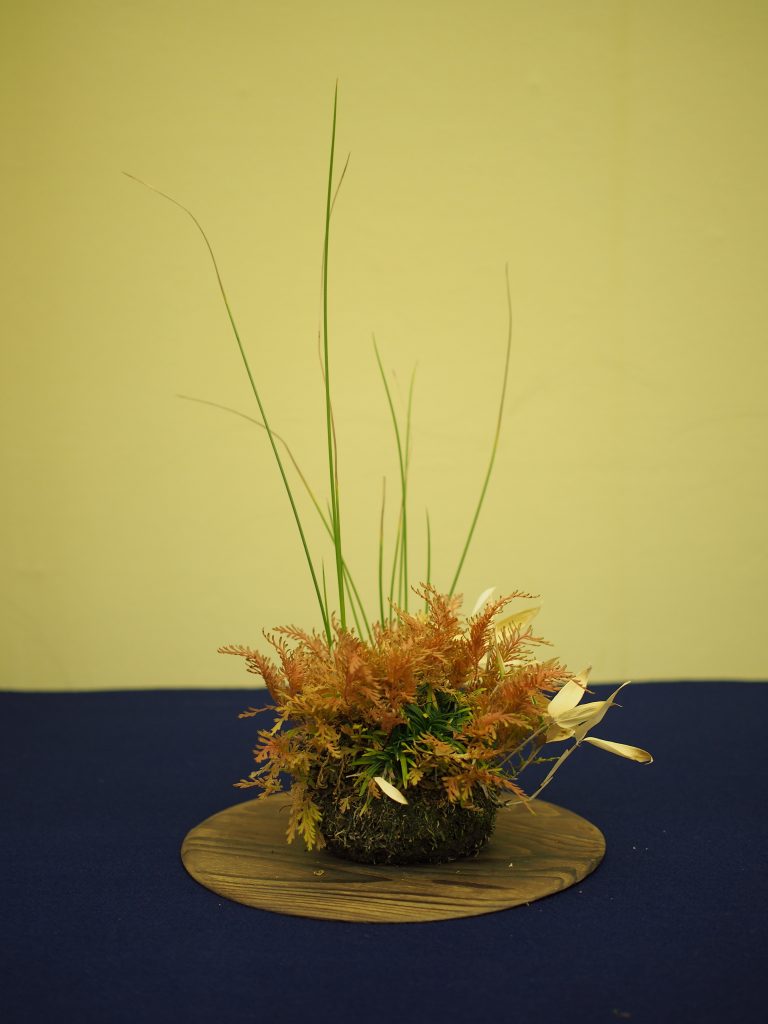
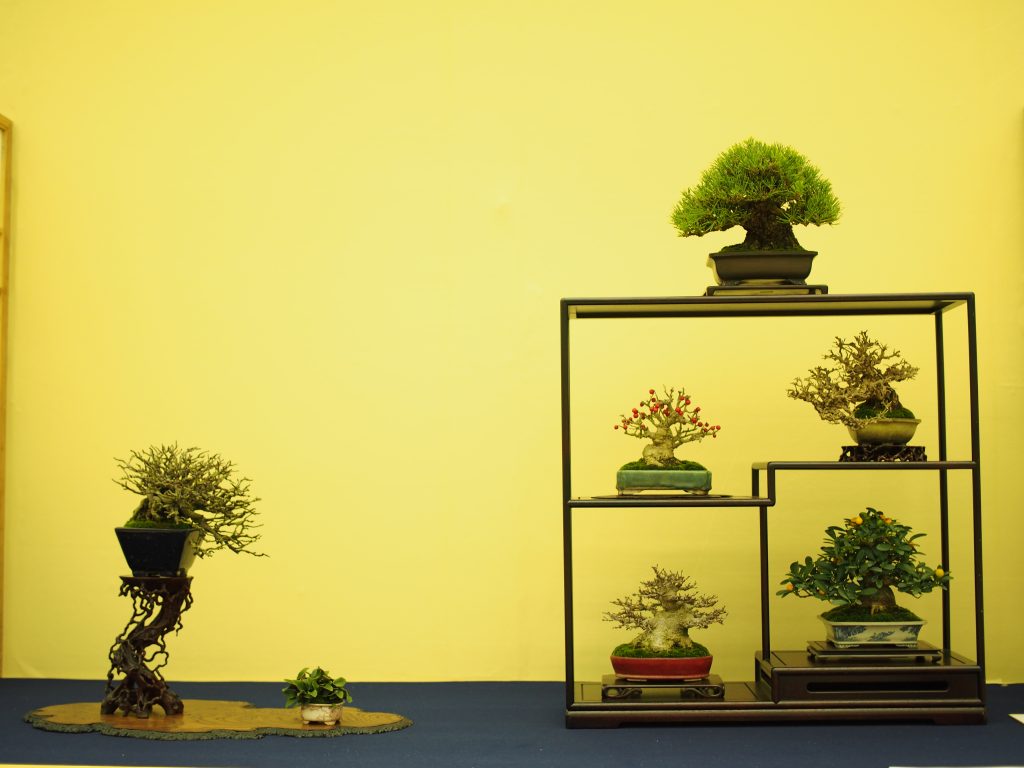
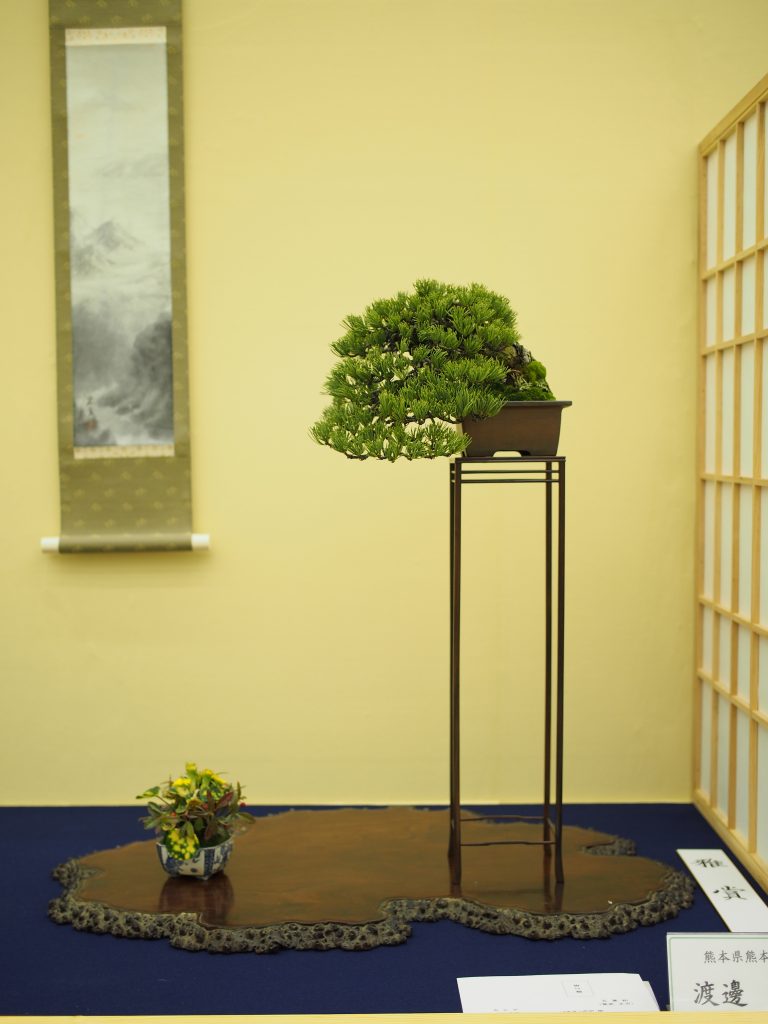
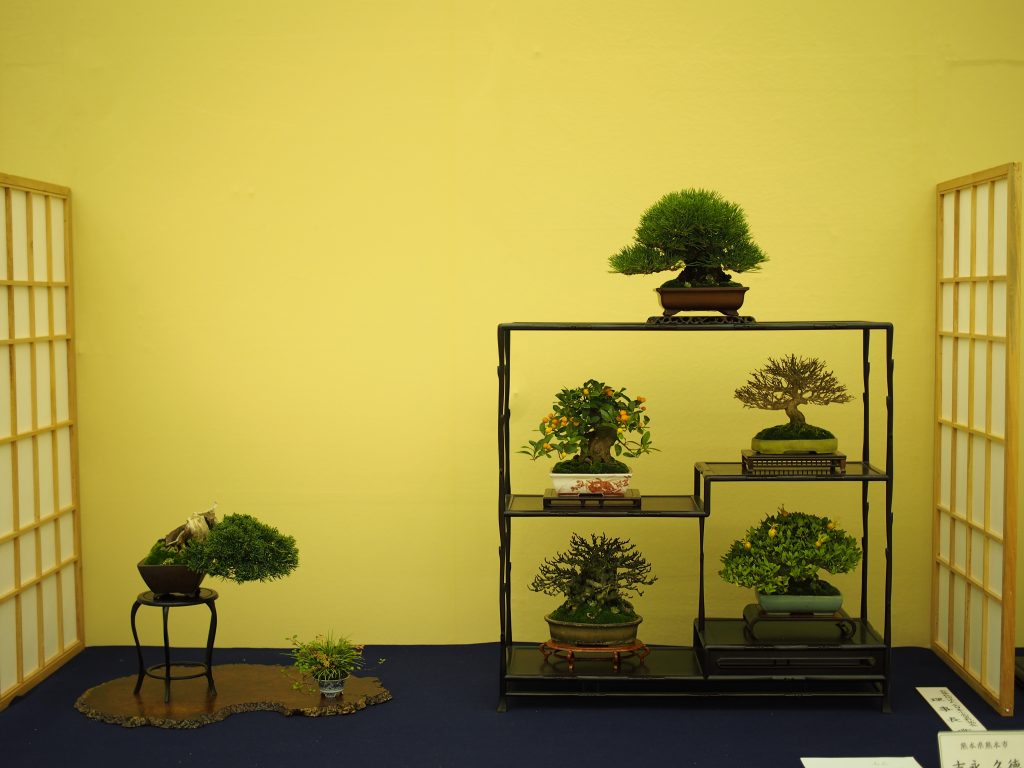
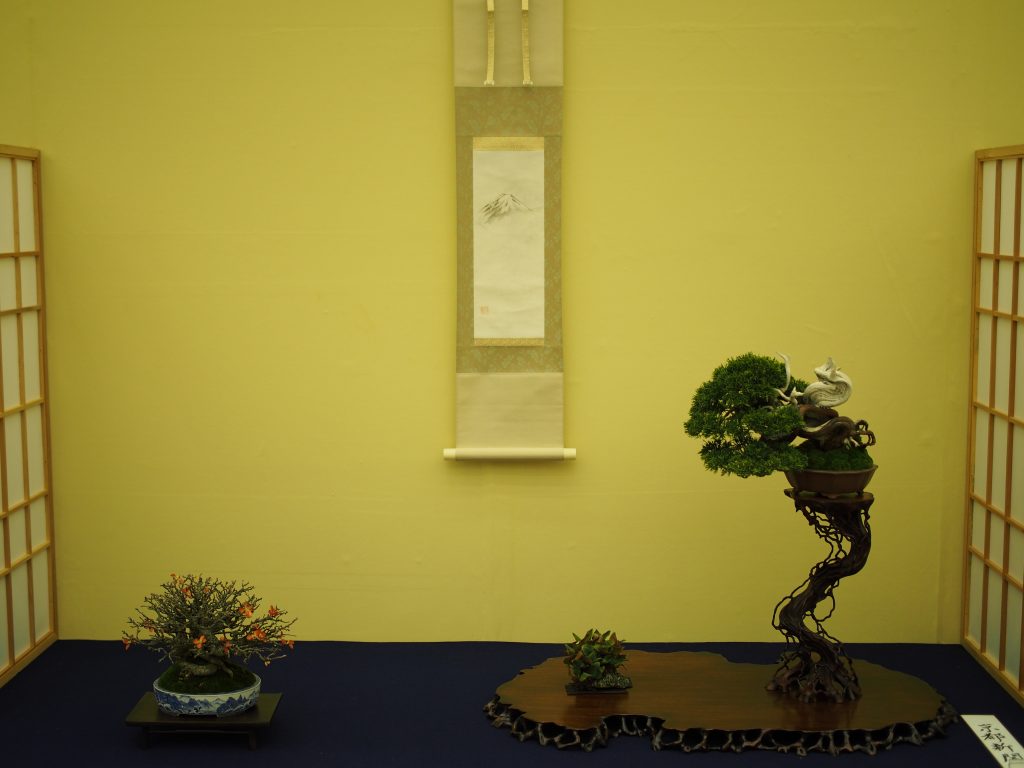
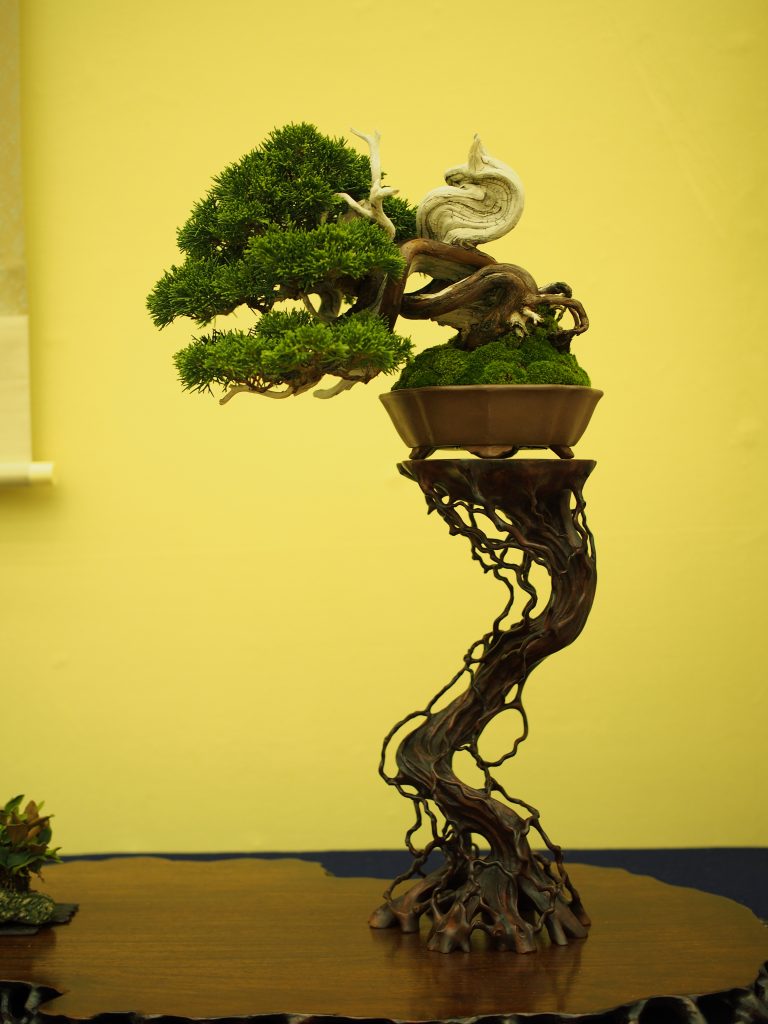
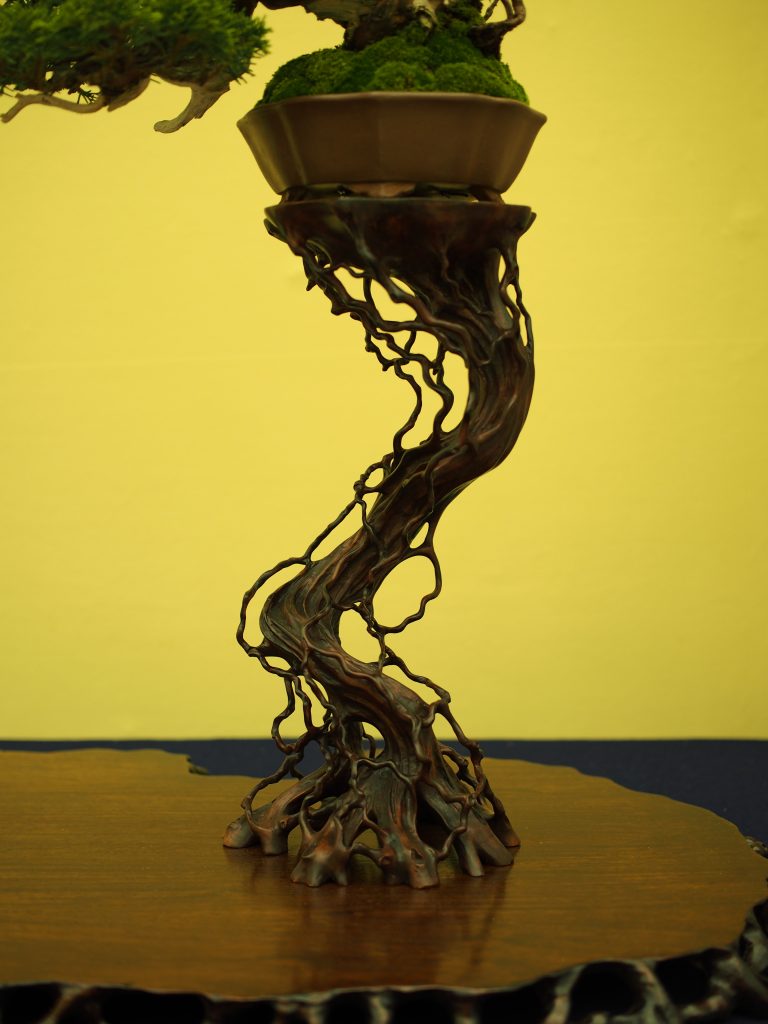
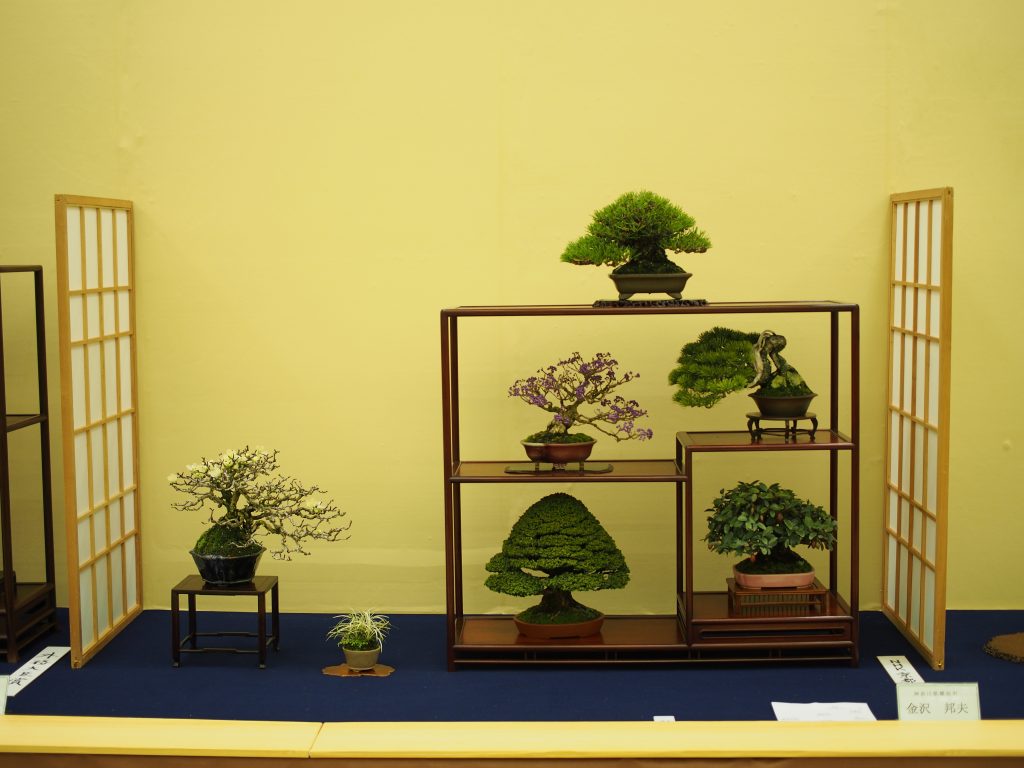
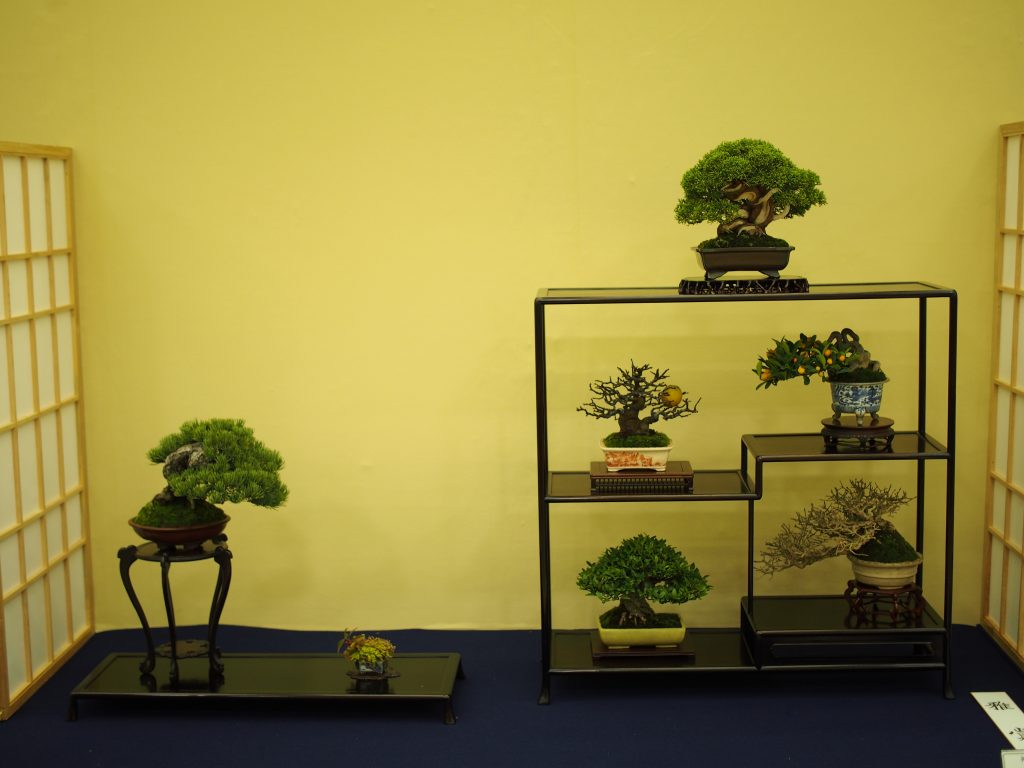
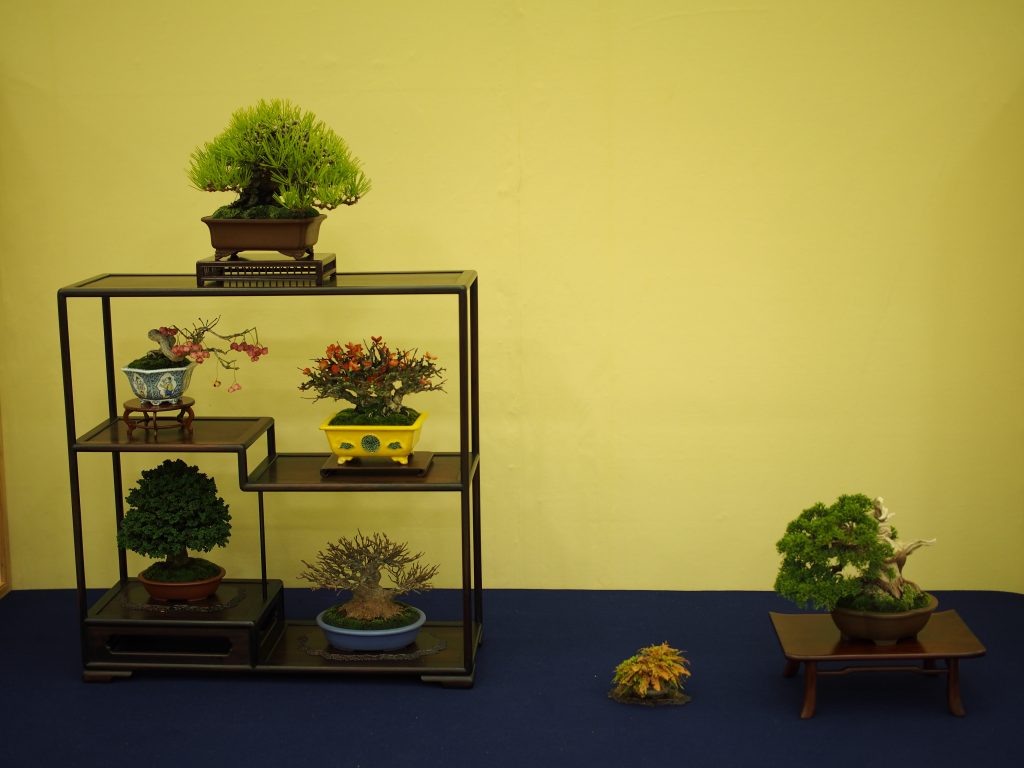
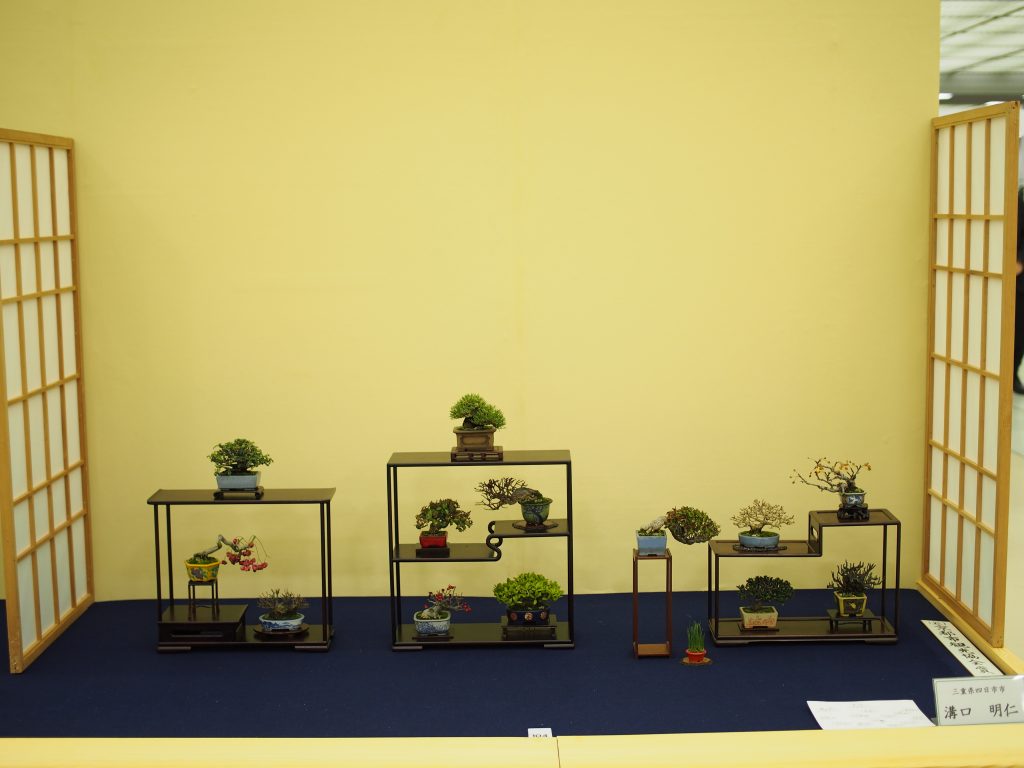
There was a decent crowd for the workshop with around 30 people watching. If this workshop was held anywhere outside of Japan it would have pulled an insanely massive crowd. It’s odd to see these professionals, who we are used to seeing work on large impressive material, working on basic material to a small crowd.
Koji Hiramatsu

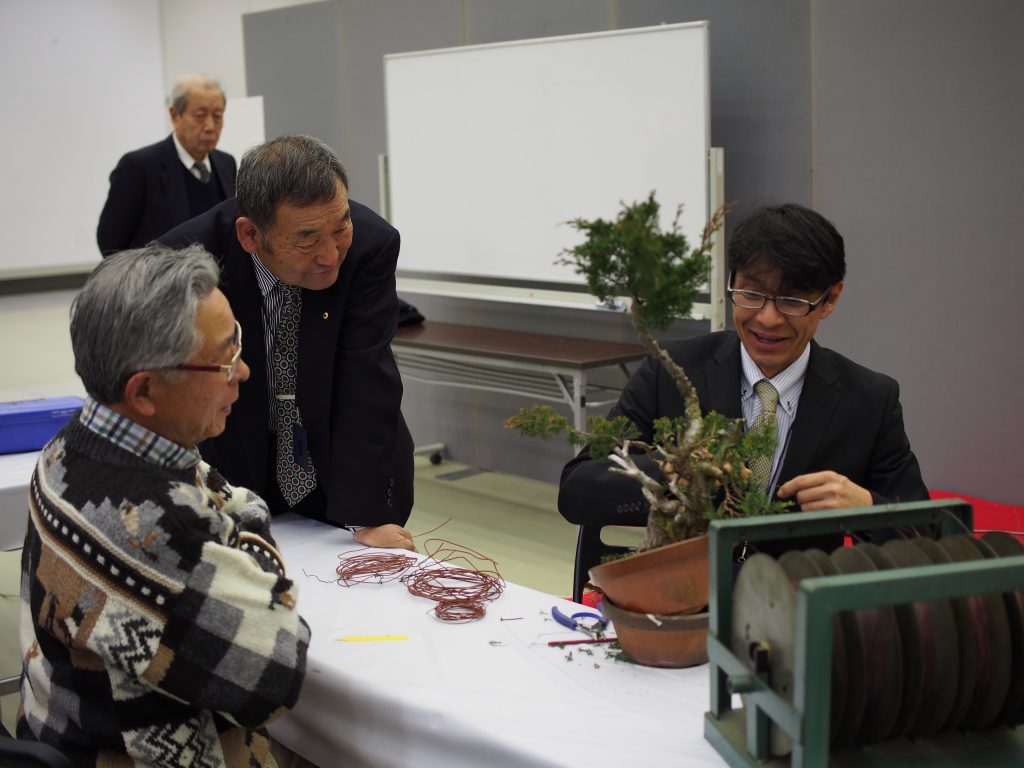
Masahiro Sasaki
Taiga Urushibata
It was also a similar affair at the awards ceremony, with only the winners and professionals attending a relatively short ceremony. Very different to the usual fanfare that accompanies awards ceremonies in the west.
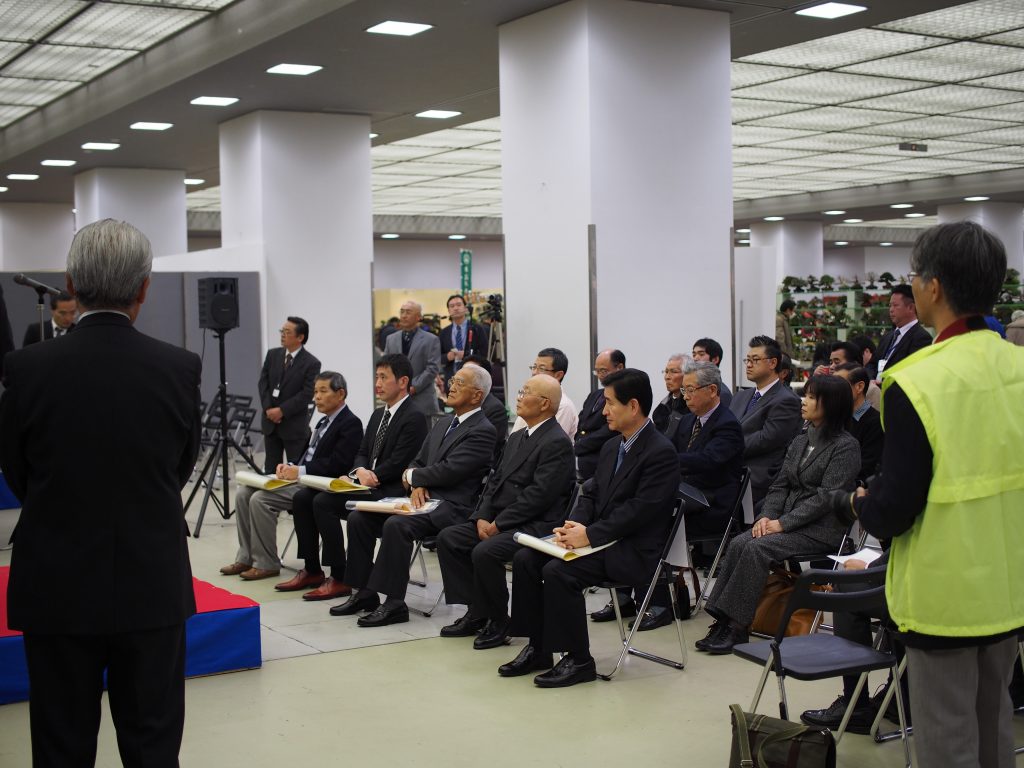
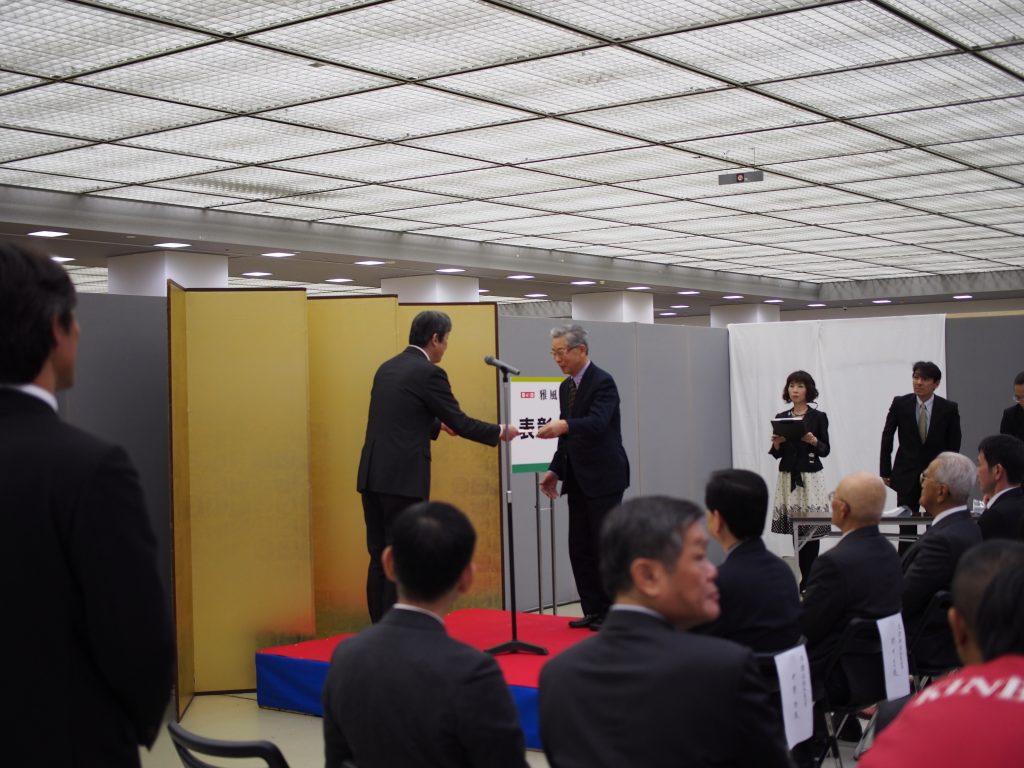
We arrived in Kyoto at around 6am, and waited for an hour until the doors opened at 7am for us to start unloading our stuff. At the carpark located around the back, other bonsai professionals were also congregating in their vans and trucks, with Koji and Big Boss getting out to catch-up with some of them. The moment the doors opened, it was business time. All of the tables and display spaces in the hall were already set-up when we got there, so it was only a matter of moving everything from the van to our table. Koji had other more important business to do because of his position in the All Japan Shohin Bonsai Association, who organise the event, so it was up to me, Big Boss and his wife to unload the van.
Here is our sales area with the dark blue cloth, where I would be spending all of the next 4 days around. Setting up the stand was fairly straight forward and took around 2 hours. A lot of that time was spent thinking and placing the trees.
The sales area was like this until midday, with trays and trolleys moving around everywhere. In the distance you can see Tomohiro Masumi of Koju-en setting up his stand with the green shelves.
Opposite of the Gashou-en stand (who were next to us) were Kaneshin tools, a very dangerous stand for me and money to be around.
Apart from the professionals setting up their stands, hobbyists and professionals were also busy setting up their displays for the exhibition.
A great example of the preparedness of most people setting up for the exhibition, with this person having a photo of their display for reference.
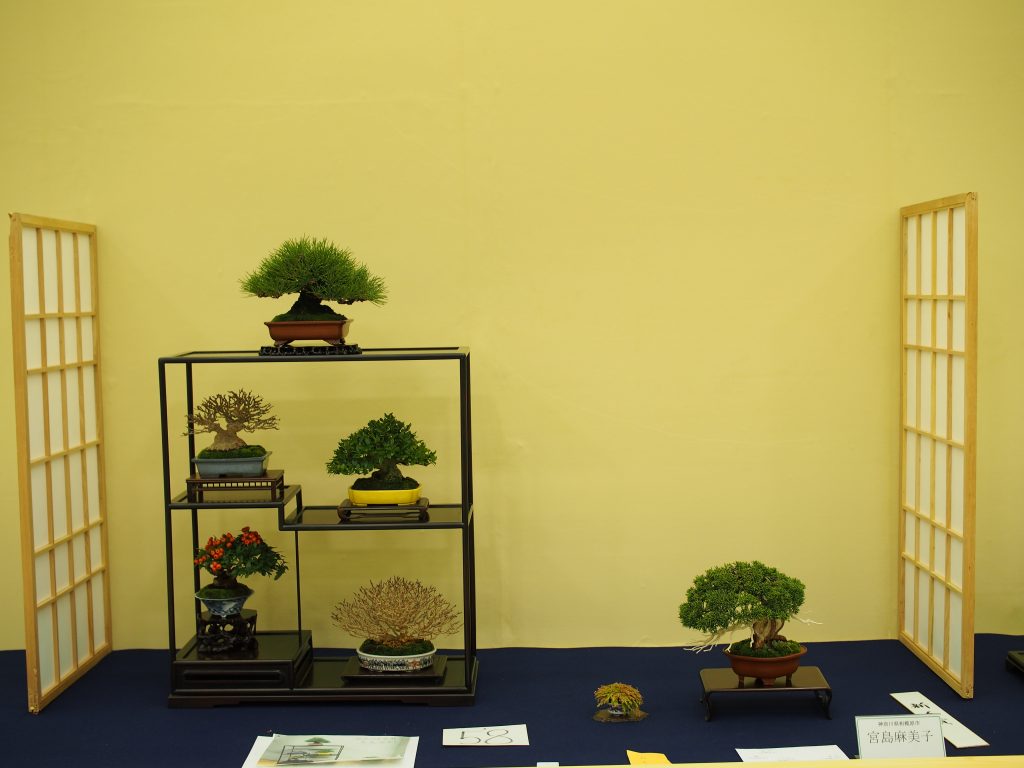
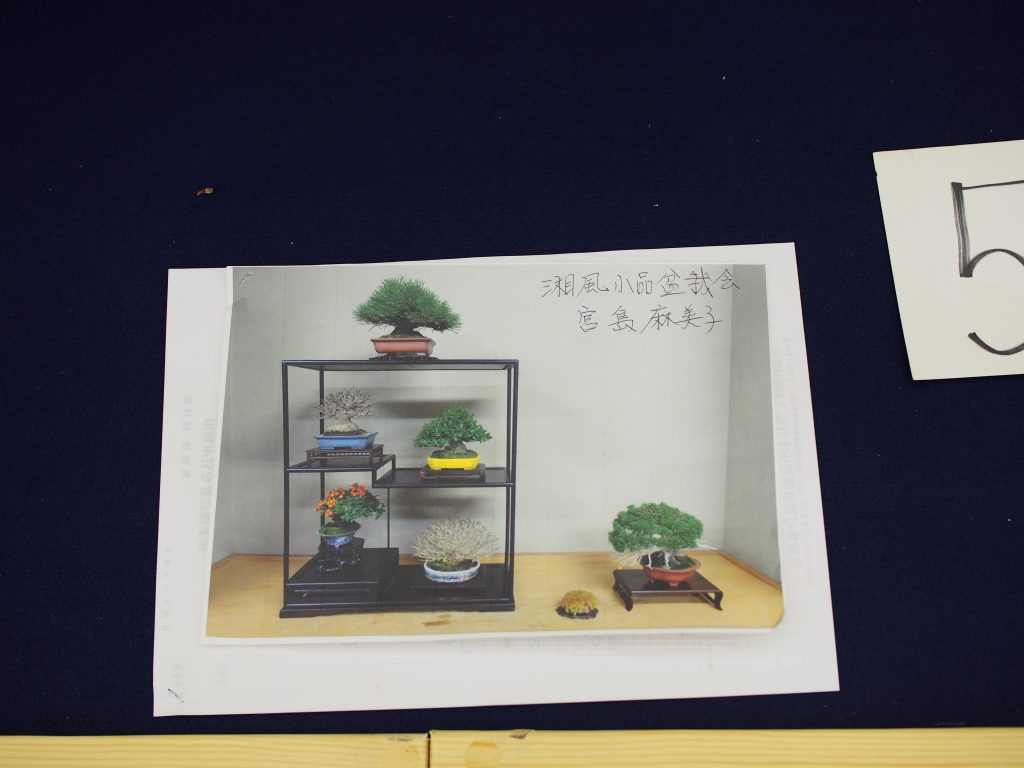
Here is our stand finished. At one point it was only me and Big Bosses wife setting up, as Big Boss had to go and help with the judging. Because we arrived and begun setting up so early, we ended up finishing set-up before most of the other stands. This gave me a good opportunity to do some pre-show shopping before the crowds got in.
30 minutes before opening on the first day of the exhibition , I got the opportunity to buy some pots from Haruyosi that he had for sale at his stand. He had only brought a box of about 30 mame sized pots, and a few shohin sized ones on offer. I ended up buying 5 pots from him. Luckily I bought them right before the doors opened, because his pots ended up selling out within the first 5 minutes of the show. His pots are so in demand that people were running to his stall when the doors opened.
Gashou-en was extremely organised with their stand. Mr Sasaki had already set-up a “prototype” stand at his nursery days before the exhibition, and had a plan to go off. Mr Sasaki and his son Yusei were both there for the exhibition, with Mr Sasaki’s wife joining them the day after. Their stand was entirely made up of high quality shohin, with a few pots for sale as well.
Opposite us were Taisho-en, with both Taiga and Mr Urushibata there selling. Many foreign Taisho-en students also visited the stand over the course of the exhibition.
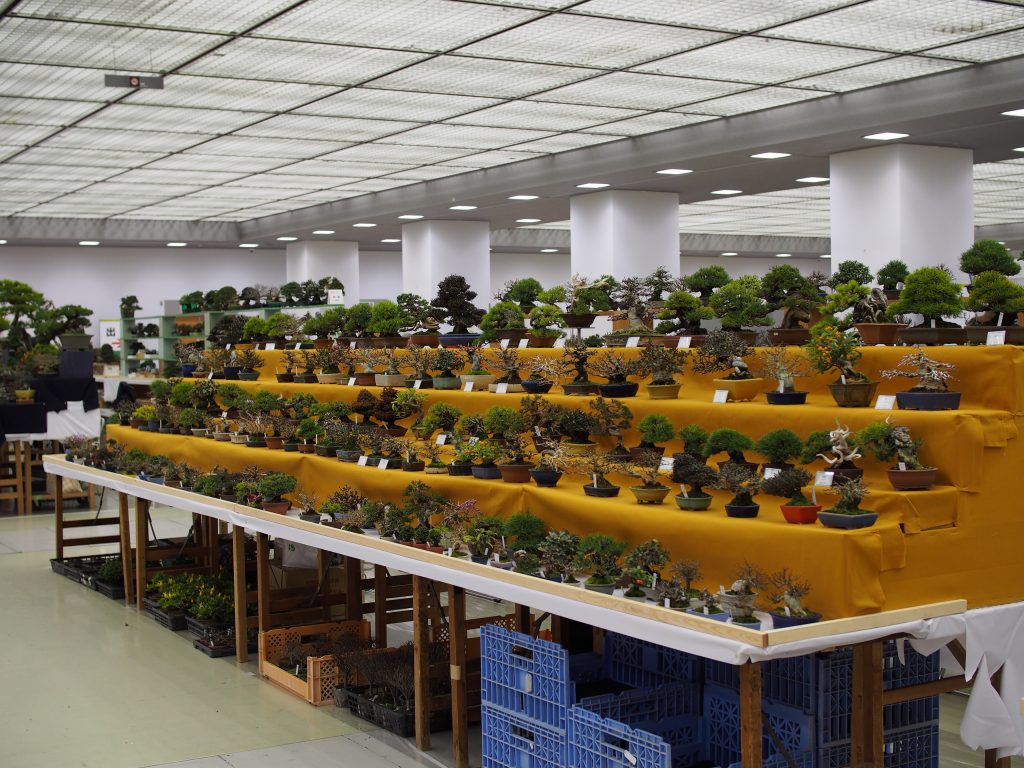
Kinbon was responsible for photography for the exhibition book, with 3 of these “booths” set up. It was amazing to watch as they managed to finish the photographing the whole exhibition in about 2-3 hours.
This was our customers entry for the exhibition. We managed to get 2nd place, with Mr Sasaki’s customer taking 1st place. Mr Sasaki’s customers display also ended up winning at Kokufu-ten as well.
These plaques are given to trees that are designated as important bonsai masterpieces. From what I understand, trees are submitted to a panel who then grant them the distinction.
And to finish off, some random shots of the sales area while they were setting up.
]]>In other news, I’ll be heading back to Japan at the end of the year to do another 3 month short-term apprenticeship. This time I’ll be heading to Gashou-en in Kumamoto learning under another Shohin King, Masahiro Sasaki.
The next few posts will be about Gafu-ten and all of the stuff involved with exhibiting and selling at that. From the time that I arrived in early December until Gafu-ten in early January, both Koji and Big Boss (Koji’s father) were busy everyday preparing trees for sale and exhibition. Pretty much all of the work in the nursery is centred around preparing for exhibitions, that work isn’t always fun and games, things like cleaning and airing out the table cloths, carrying stuff, loading stuff.
While I was put to work practising my wiring for most of December, a few days before we had to leave for Gafu-ten I was tasked with putting moss on some of the sales trees. I thought it would be good to do a small tutorial on how to moss up trees, Evan-style.
Here’s the patient for this operation, a nice shohin shimpaku.
And here’s the moss. What I found amazing about this moss compared to the stuff you can find in Australia is that it seems to naturally form little mounds. Makes it a lot easier to break apart into natural looking clumps when mossing trees.
Speaking of clumps… After you’ve broken the moss up into little clumps, you gotta clean the little fella. Basically get rid of any little leaves, or weird snail poop trails, or little dead spore heads, pretty much anything that isn’t velvety and green.
Next comes the hardest part, trying to make the moss look natural. It might seem a bit counterproductive to break the moss apart to only put it back together again, but it looks 5x better than placing the moss on in large sheets. And definitely try to avoid making the moss a flat carpet. Flat moss = boring moss = unnatural moss. The key is to avoid any strong lines formed by the moss when you look from the front, unless you want the strong lines suggesting you have roots where there are none.
The next trick to making the moss look natural is to place it like a jigsaw puzzle. Find pieces that will fit into spaces perfectly with no visible join between two pieces, and if they don’t fit perfectly maybe cut a little off until you get the desired effect. You might also need to trim soil off the bottom of the soil so that it sits a bit lower and joins a bit better.
Repeat this until there’s no soil visible on the surface. It’s a bit hard to describe what it should look like in words, so I’ll let the next picture do the talking.
You’ll hopefully end up with a lush undulating carpet like this little segment. Like most of Bonsai, you’ve got to take your time and be meticulous if you want good results.
After finishing up the mossing and all the final touches on the trees, it was time to load them into the van for the journey to Kyoto. The good thing about shohin is that they’re easier to pack and transport than larger trees. All of the trees were transported in white crates, with newspaper packed inbetween the more expensive trees and pots to make sure they don’t move. These crates are incredibly handy because of all the accessories that come with them, like the spacers for the taller trees, or the wheels that you can attach on the bottom.
The cheaper stuff unfortunately doesn’t get the same royal treatment.
Our chariot to Kyoto is the customised bonsai Hiace. This van is mainly used for transporting bigger trees and travelling to sell at exhibitions, other than these events it doesn’t move from under the carport. Fitted into the back of the van is custom welded supports for the shelves. This shelving is especially handy for the Shohin crates, they fit nice and snug on the top shelf.
Right on the top we put in crate which had a shohin shimpaku with a massive delicate tenjin that had about 1cm clearance. It worked out okay, but definitely a sweat inducing moment.
In the end there were probably 20 of those white crates all filled with trees. Along with those we had to pack 2 crates of pots, shelves for the sales tables, and all the stuff for the customers displays. Only just enough space left for me, Koji, Big Boss and his wife.
And here is the van again at midnight, when we start our journey to Kyoto. After finishing work for the day at around 5pm, we had dinner, a shower, bag packing, and then a small rest on the couch before we had to head out at 12am.
Rather than drive all the way to Kyoto in one big stretch, we caught the ferry from Takamatsu to Kobe. The benefits of taking this route to get there is we’re able to get a rest on the ferry before having to work hard setting up for the show. We got to the ferry port at around 1am, with our ferry scheduled to leave at 2. This gave us a good hour to have a nap, or in my case, get out and take some photos of the ferry port.
Hello Kobe! After getting in a 3 hour nap, it’s time to get off the ferry and head to Kyoto so we can get there at 7pm. Stay tuned for part 2 of Gafu-ten adventures.
]]>